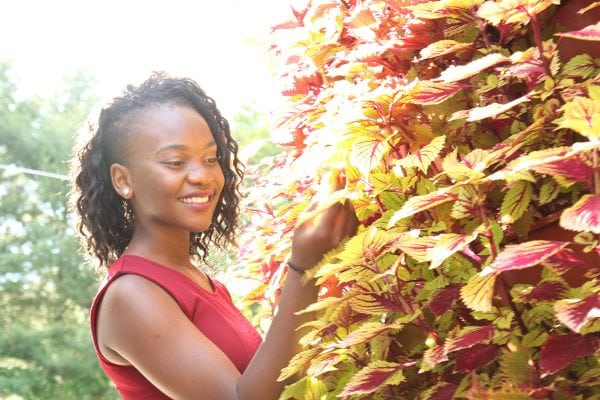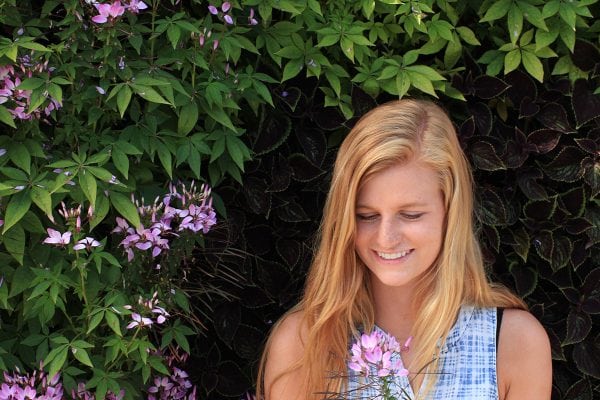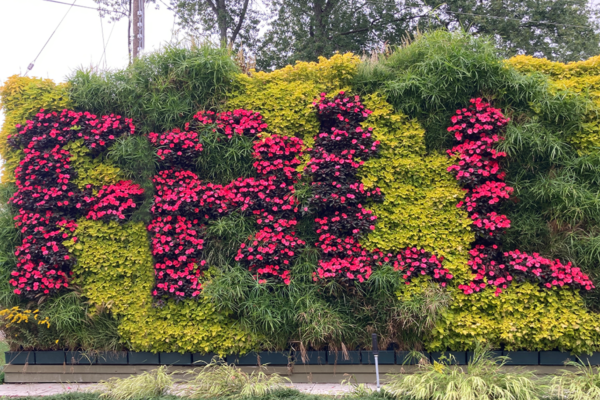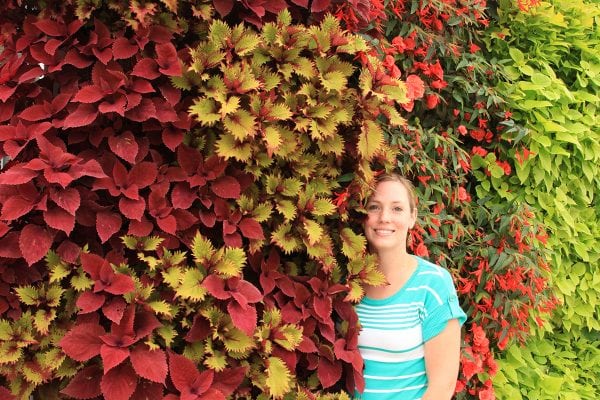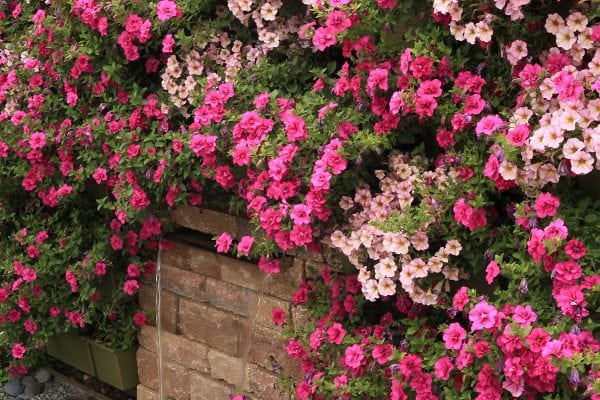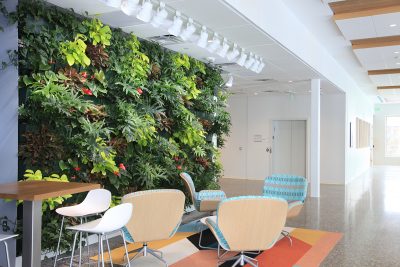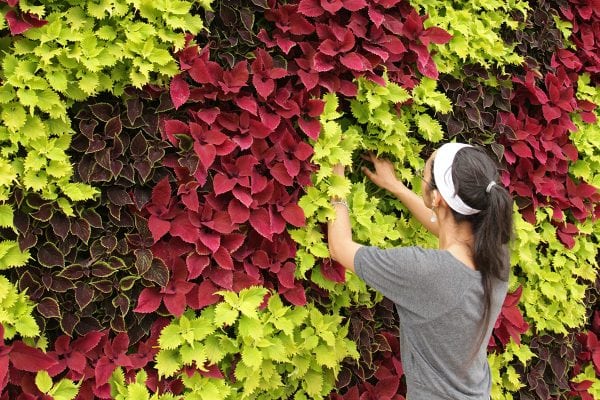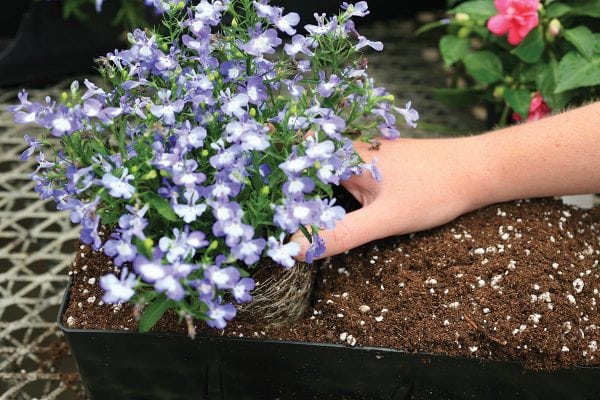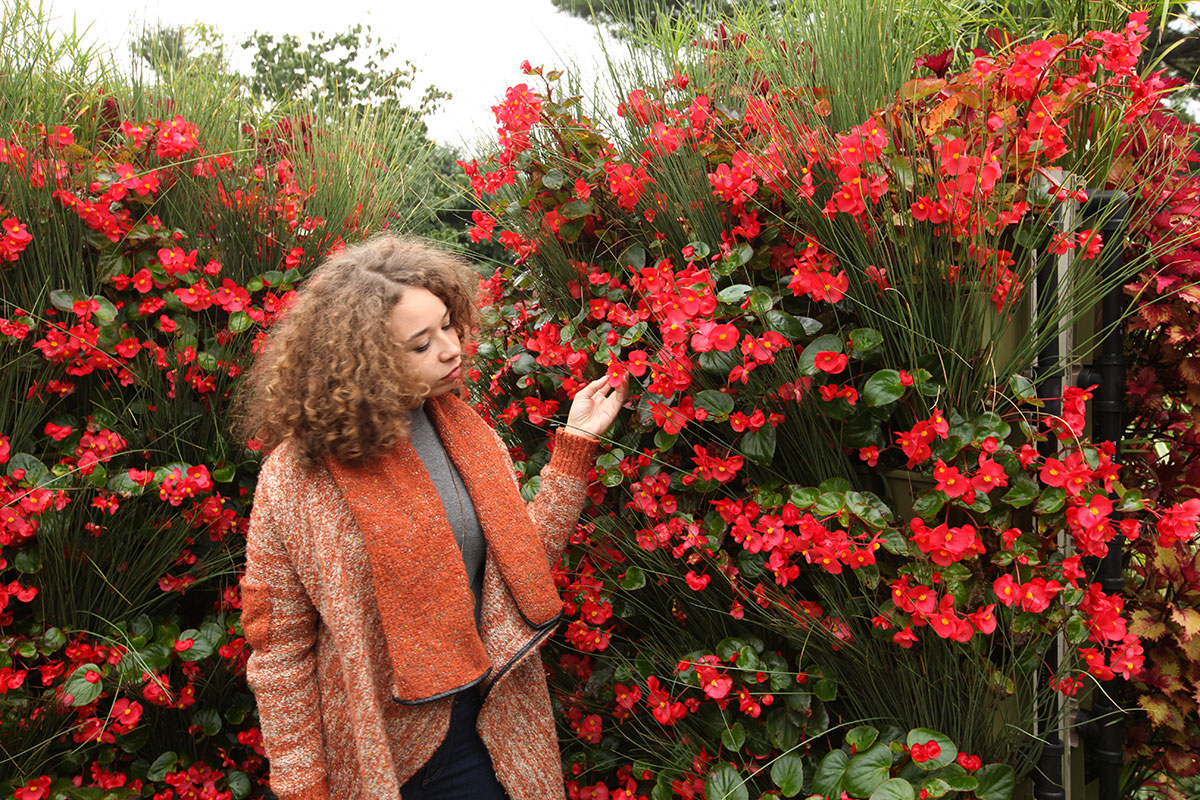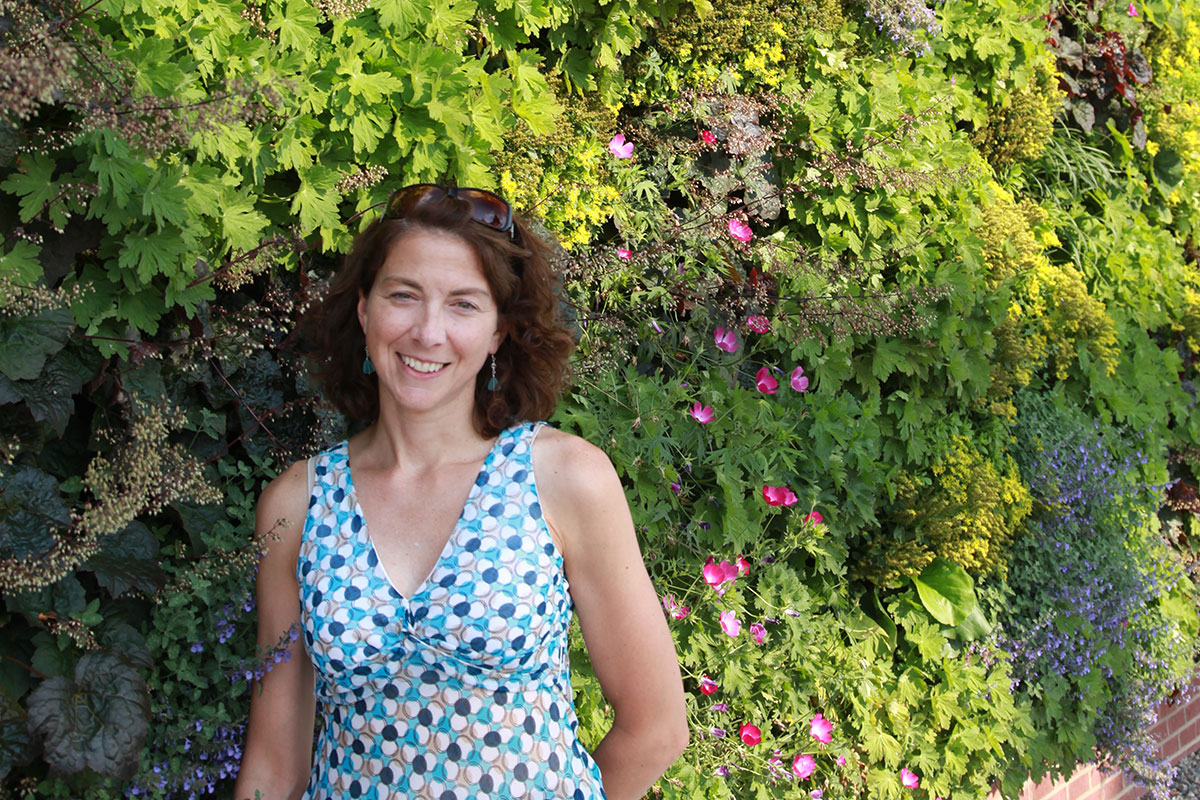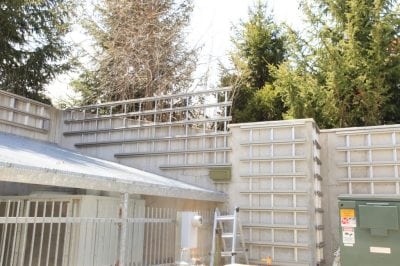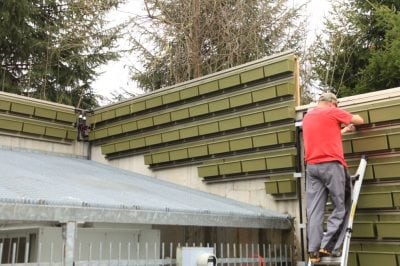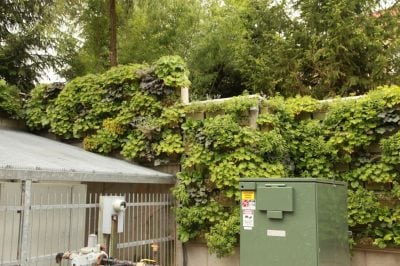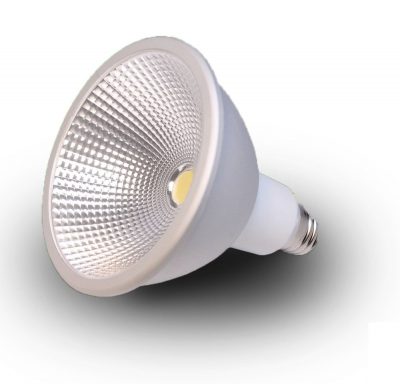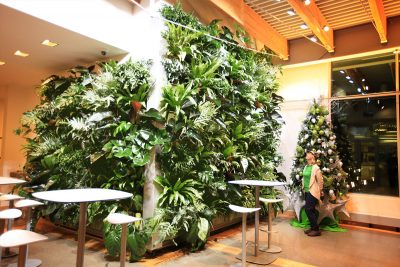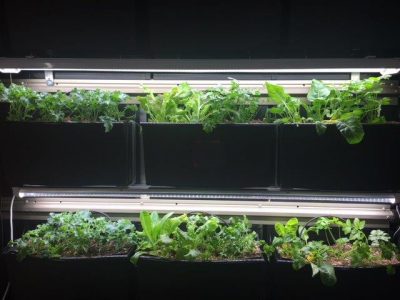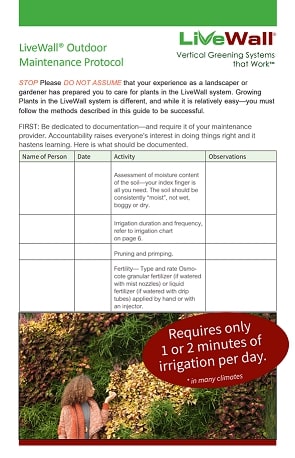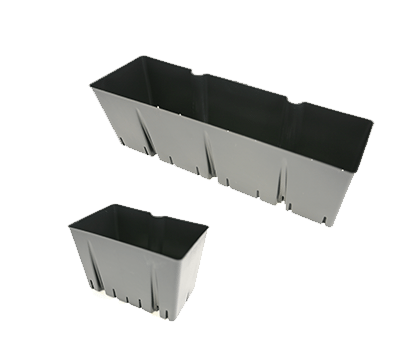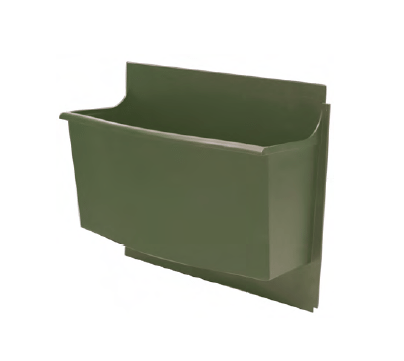BENEFITS
First and foremost, LiveWall is designed by career horticultural professionals to grow healthy plants. From top to bottom, LiveWall’s vertical garden planters create a natural growing environment. We employ only our TopSide® technology, whereby the soil is oriented horizontally, unlike some competitors’ products, the plants grow upward from the top of the soil and the roots grow downward, as they do in nature. Likewise, with our unique RainRail™ mounting rail/irrigation conduits, the LiveWall System waters your plants naturally, like rain, but in evenly metered amounts along every tier of your living wall to sustain nutrient levels and plant health.
A living wall or vertical garden from LiveWall is unique in its simplicity, easy installation, and sustainability. Our WallTer® wall-planters are high-impact, UV resistant moldings, and the unique inserts make pre-growing and planting simple. The LiveWall plants are typically pre-grown for instant maturity, instant benefits, predictable maintenance, and low life-cycle costs.
Finally, a living wall from LiveWall is absolutely beautiful, and is attractive even when the plants are dormant. LiveWall can be used in both interior and exterior applications. It is effective for commercial, industrial, educational, governmental, and residential projects. Although beautiful and functional in suburban and rural installations, LiveWall is particularly suited for the urban dwelling environment and is scalable. Our vertical gardens work beautifully in the most intimate urban applications as well as large scale, multi-story commercial projects and, in either case, can be installed with great efficiency.
Design flexibility is enormous and ranges from the use of annual plants for colorful patterns and waves of flowers to long-lived succulents, perennials, herbs, and vegetables. To meet your requirements, LiveWall modules can arrive at the job site fully vegetated in WallTer Inserts. Maintenance is easy and replacement of the plants is quick and economical.
The LiveWall System is different in design and use from other planted living wall products. For example, when you involve us in your design process and adopt the LiveWall System, you can rely on your living walls to be successful each and every time. LiveWall brings other important benefits, as well, such as excellent aesthetic presentation, instant functional and environmental benefits, substantially lower maintenance, elimination of soil erosion, standardized installation by expert installers, expertly engineered soil and plant selections, durable lasting components, and the pride in another sustainable eco-friendly project.
Simple, effective, attractive, instant, and most of all, great at growing healthy plants, LiveWall represents the best design and the best value in green, living wall systems.
Vertical gardens will save the property owner on air conditioning and heating costs, and will save on the grocery bill when planted with herbs and vegetables. There are many additional financial benefits associated with Biophilia in the workplace, retail settings, healing centers, and educational environments.
The LiveWall System is delivered with mature plants in vertical gardens that are rich with the proper nutrients and irrigated by a metered watering system. As a result, our sustainable system demands less maintenance cost and prolonged plant longevity.
Plants, soil, trapped air, and moisture in the soil are great acoustic insulators. Studies have shown that green walls can reduce ambient noise by up to 40 decibels, an important benefit to those who work or live close to noisy streets, highways and airports. Because the decibel scale is logarithmic, every 10-decibel reduction equals a tenfold decrease in intensity.
If you live on a busy street, ambient noise levels may average 75 decibels. The design for a quiet office may target 60 decibels, a quiet urban neighborhood may average 40 decibels at night and a quiet library may seek to operate below 40 decibels. If you are an architect, landscape architect, or contractor, it is easy to see how much additional peace and tranquility you can bring to your client by including a vertical garden in your building plan.
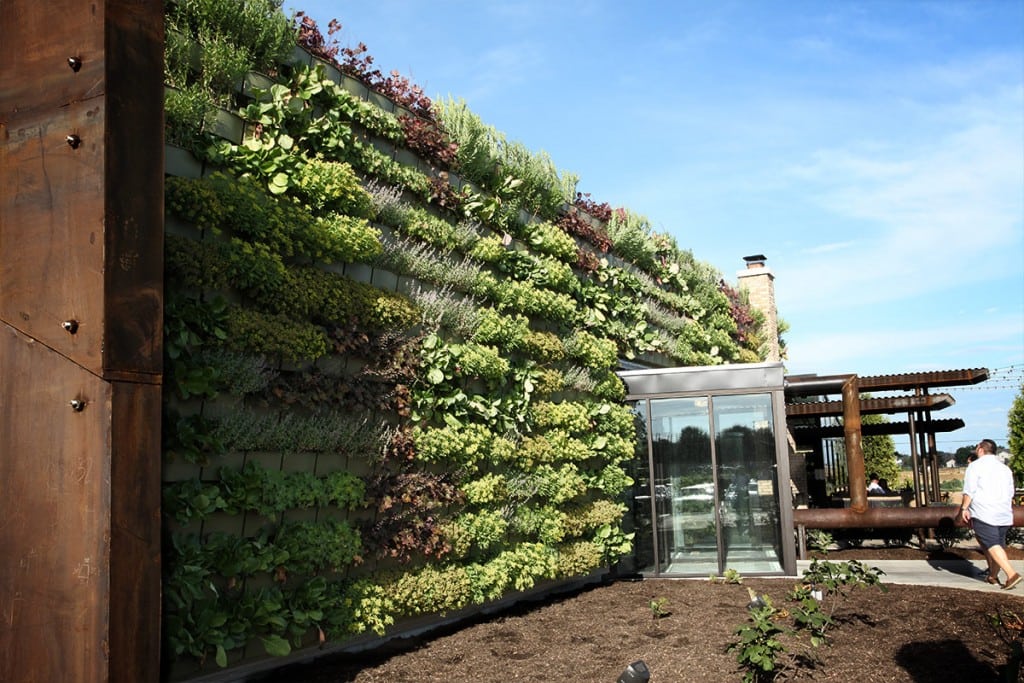
The typical green wall has very little impact upon storm water runoff. This is because the system footprint is vertical and is quite small in terms of horizontal surface area. In addition, the building overhang often blocks rain.
If storm water management is a high priority, the rain should first be captured from the roof, stored in a cistern, then filtered and used to irrigate your LiveWall vertical garden.
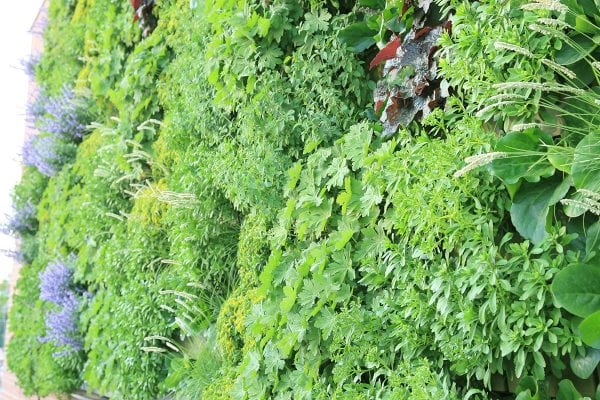
Living walls contribute to improved indoor air quality. They naturally provide oxygen, humidity, and reduced particulates and volatile organic compounds (VOCs). When people are surrounded by plants, they are happier, healthier, as well as more creative, productive and focused. They experience less stress and lower cortisol levels.
COST
Vertical gardens will save the property owner on air conditioning and heating costs, and will save on the grocery bill when planted with herbs and vegetables. There are many additional financial benefits associated with Biophilia in the workplace, retail settings, healing centers, and educational environments.
The LiveWall System is delivered with mature plants in vertical gardens that are rich with the proper nutrients and irrigated by a metered watering system. As a result, our sustainable system demands less maintenance cost and prolonged plant longevity.
The need to replant during spring will vary with the severity of winter, diligence to proper care, and plant material.
Annuals, Vegetables, & Herbs
These plants require replacement at the beginning of every growing season. There are two ways of doing this:
- Drop off your empty planter inserts at a local nursery to have them grow the plants in their greenhouses. If they begin 6-8 weeks prior to your last frost date, you can begin harvesting right away once you plant them.
- Plant the liners yourself using 2 or 3 inch starter plants from your local garden center.
In any event, it is important to thoroughly wash out the planter inserts and start with fresh potting soil.
Soil Type
Organically rich potting soil, available at every garden center.
Perennials & Tropicals
By definition, perennials, including tropical perennials, have the potential to live forever. But, when grown in a container such as the living wall planter insert, they will eventually become root-bound, and at some point will need to be replaced, or divided and replanted. How long they will go with out the need for division is a factor of the particular plant’s habit, its root characteristics, and climate. Many perennials are expected to last up to three years before becoming root-bound in the LiveWall system.*
How do you know when it is time to replant and divide a perennial? You know it is time when the plant has become so root-bound that the growth and flowering become stunted. When this occurs, the plants can be removed, divided and replanted. Or, they can be composted and replaced with new plants. Replacements should be done during spring or early summer so that the plants become well established prior to winter.
Soil Type
Potting soil containing pine bark, as it decomposes very slowly.
Sedums & Succulents
Because most Sedums and succulents have very fine root systems, they have the potential to survive for many years without becoming root bound. Some could be sustained for over a decade depending on the species and care. As such, they need to be potted in a soil that will hold its structure for many years.
Soil Type
“Alpine” soil-type that is gritty and highly inorganic (similar to blends used for green roofs).
*Consider a vinyl cover to reduce winter perennial plant losses.
Managing moisture of perennial plants during winter can be challenging. LiveWall supplies grommeted, vinyl winter covers to aid in the overwintering of “perennial” plants in cold winter climates.
Why is this needed?
In cold winters, especially those with sunny windy conditions, the plants can literally be “freeze-dried.” By covering with a vinyl winter cover, this effect is greatly lessened. Winter covers act to moderate temperature highs and lows, block the wind, and hold in moisture.
What do they look like?
They are printed with an attractive mid-green, translucent Boston ivy graphic.
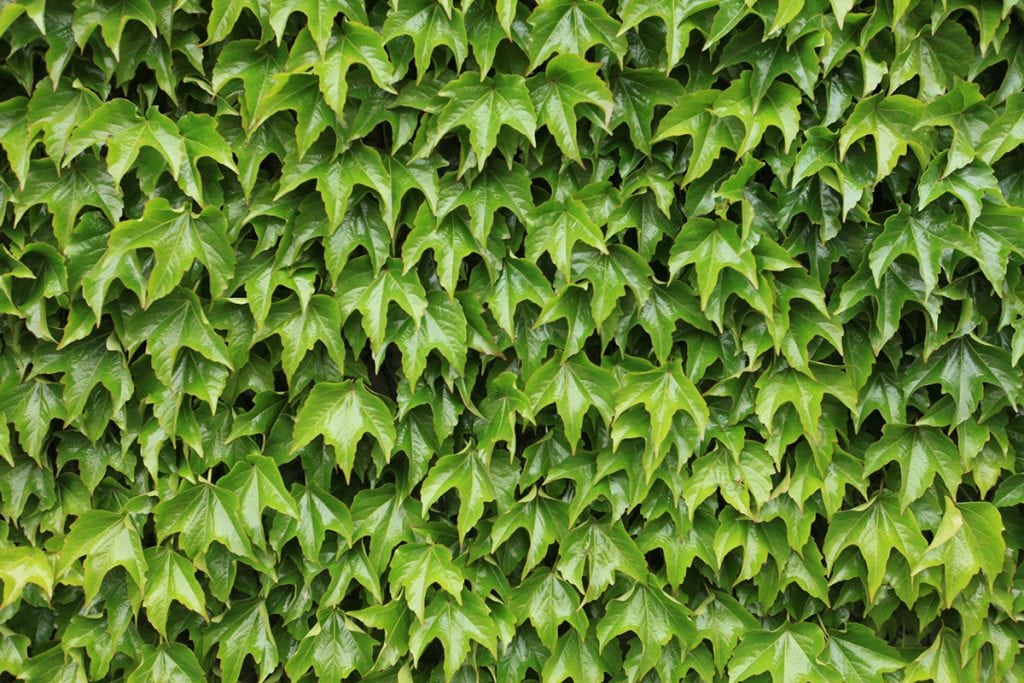
How are they used?
- Winter covers are applied just before the soil freezes, approximately December 1 in Michigan for example, and only after THROROUGHLY WATERING THE SOIL (the day before covering). The plants should not be pruned before they are applied. This helps hold in moisture.
- Winter covers are typically removed during mid to late March in Michigan for example. Upon removal, plants are immediately and thoroughly watered (and thereafter watered according to need—see LiveWall watering chart), but not pruned until after danger of late frost, as they will have tender new shoots among last year’s foliage and stems.
How are they attached?
- They are tightly applied with zip ties, bungee straps, or ¼ inch nylon rope. They can be anchored into the support wall, the LiveWall frame, or the planter boxes. Some installers drill small holes in the top or bottom lip of the planters, which is relatively unnoticeable. Winter covers should be tightly attached to structure, with every grommet. If the wall is large, it will require multiple covers, and the grommets in the middle should be attached to the planters or structure, rather than just connected together. All grommets should be tightly attached to structure.
- If the site is very windy, consider adding some strapping or roping material across the face of the cover, to prevent billowing or flapping in strong winds.
What sort of results can I expect?
All walls, exposures, and weather conditions are unique, so there are no guarantees. However, when winter covers have been properly used, they have greatly improved overwintering success—with some walls in Michigan experiencing nearly 100% survival.
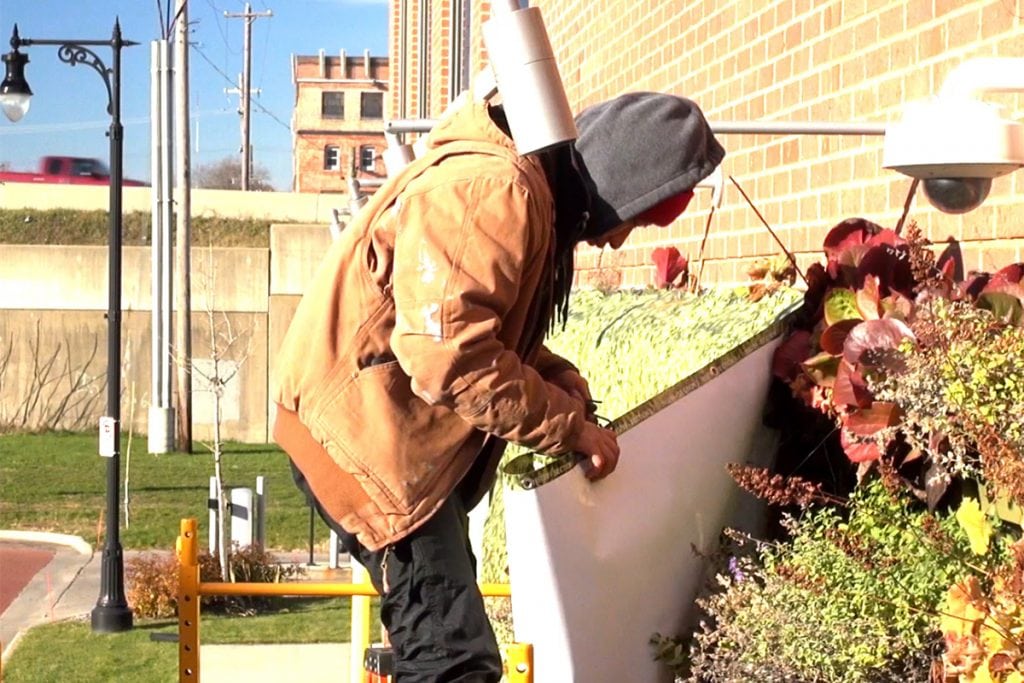
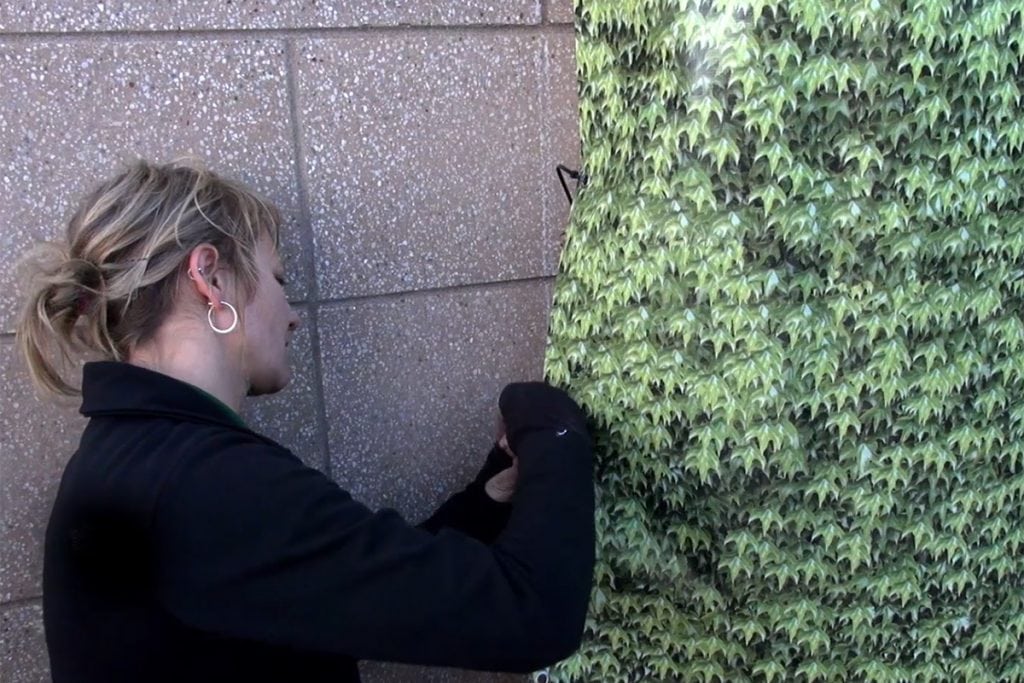
DESIGN
Designing a living wall or vertical garden may not be something that you do everyday, so we have made it easy. We are happy to facilitate custom designs for larger scale commercial applications, and we have kits for smaller projects.
With a photo or drawing, and following a discussion of project specifics, one of our staff designers will be pleased to provide you with a price estimate. With every order, LiveWall produces shop drawings to indicate the layout of the rails, planters, and irrigation valve assembly.
For more information, please contact us at sales@livewall.com or call 877-554-4065.
Dr. Anna Droz, strategic educator at LiveWall, has released a video in which she goes through her entire process of designing a living wall, including plant selection and final results.
For help with living wall plant selections and more pattern designs, see our plant selection page.
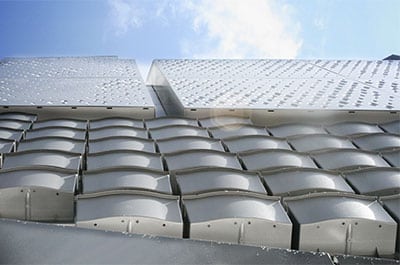
Depending on the wall orientation, climate, and design intent, designers may choose from a broad variety of plant types. These include:
- Annual plants
- Perennial plants
- Edibles such as vegetables, herbs, and strawberries
- Succulents
- Tropical Plants
LiveWall has trialed hundreds of plants and has compiled our findings in living wall plant selection and pairing design guides for each of the plant types above. Copies of the plant selection and pairing guides are available to customers. To determine which plant types are best for your project, please contact us at sales@livewall.com or call 877-554-4065.
For inspiration, click below to see a gallery of projects by type of plants.
In most cases the answer is, yes. In some cases it may take a little redesign for the additional weight of the LiveWall modules, but the principal force of the LiveWall system is downward, so most of the time retrofitting is relatively easy. A qualified engineer should always be consulted for retrofit applications.
LiveWall is a soil-based living wall system that utilizes molded-planters, and the structures must be designed in the increments required to accommodate full planters:
Horizontal spacing: 16″ on center
Vertical Spacing: Large Planters (Indoors or Outdoors): 16″ on center, Standard Planters (Outdoors): 12″ on center
Typically, the only components that you would need to cut to fit are the furring strips and irrigation lines. RainRail® irrigation conduit slot rails are manufactured in a variety of lengths divisible by 16 inches. Our design staff chooses appropriate RainRail lengths to eliminate field cutting.
In some cases, field conditions may not match the site plans provided to LiveWall and custom cutting may be required. In those cases, the rails must be cut to 16 inch increments.
When cutting irrigation conduit rails, do not use hack saw as it leaves rough burrs which will plug the irrigation nozzles. Instead use diamond blade on circular saw (We recommend the Slugger Metal Cutter by Jancy). Carefully clean the cut end of all burs and debris to prevent clogged nozzles or damage to RainRail fitting o-rings.
Using the Standard sized planters, LiveWall structures weigh from 10 to 15 pounds per square foot when saturated and vegetated with typical upright growing plants. Long trailing vines may increase this weight.
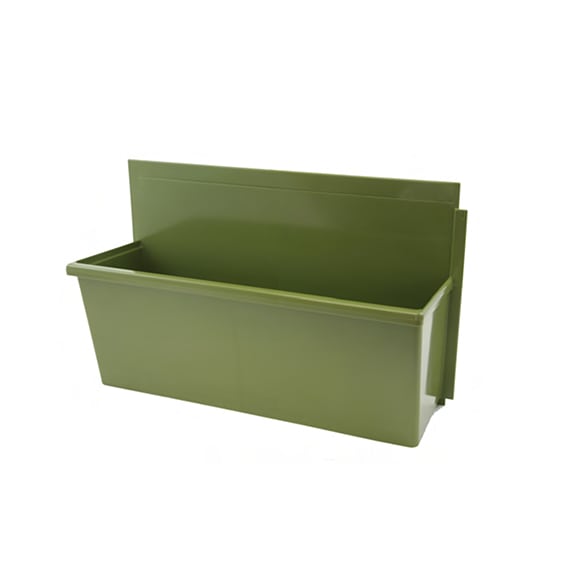
Using the Large sized planters, LiveWall structures weigh from 18 to 22 pounds per square foot when saturated and vegetated with typical upright growing plants. Long trailing vines or very large, succulent foliage may increase this weight.
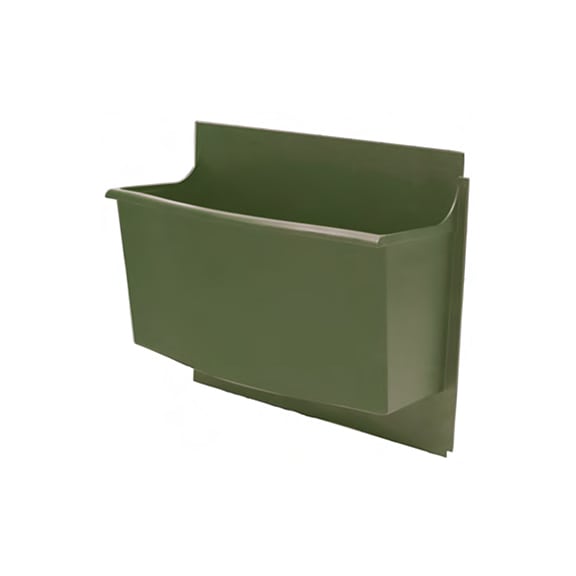
The LiveWall system includes furring tracks, which provide flexibility in design over a number of different applications. The building wall design and means of fastening LiveWall to the wall system are the responsibility of the local architect and/or structural engineer and installation contractor and must comply with local codes. The installation contractor will be responsible to select appropriate anchors.
We contacted Fastenal and HILTI for their recommendations for various types of wall structures, and compiled them below (based on 18 pounds per square foot). Contact your preferred anchor manufacturer to confirm suitability for your application. Please note that adhesives should not be used.
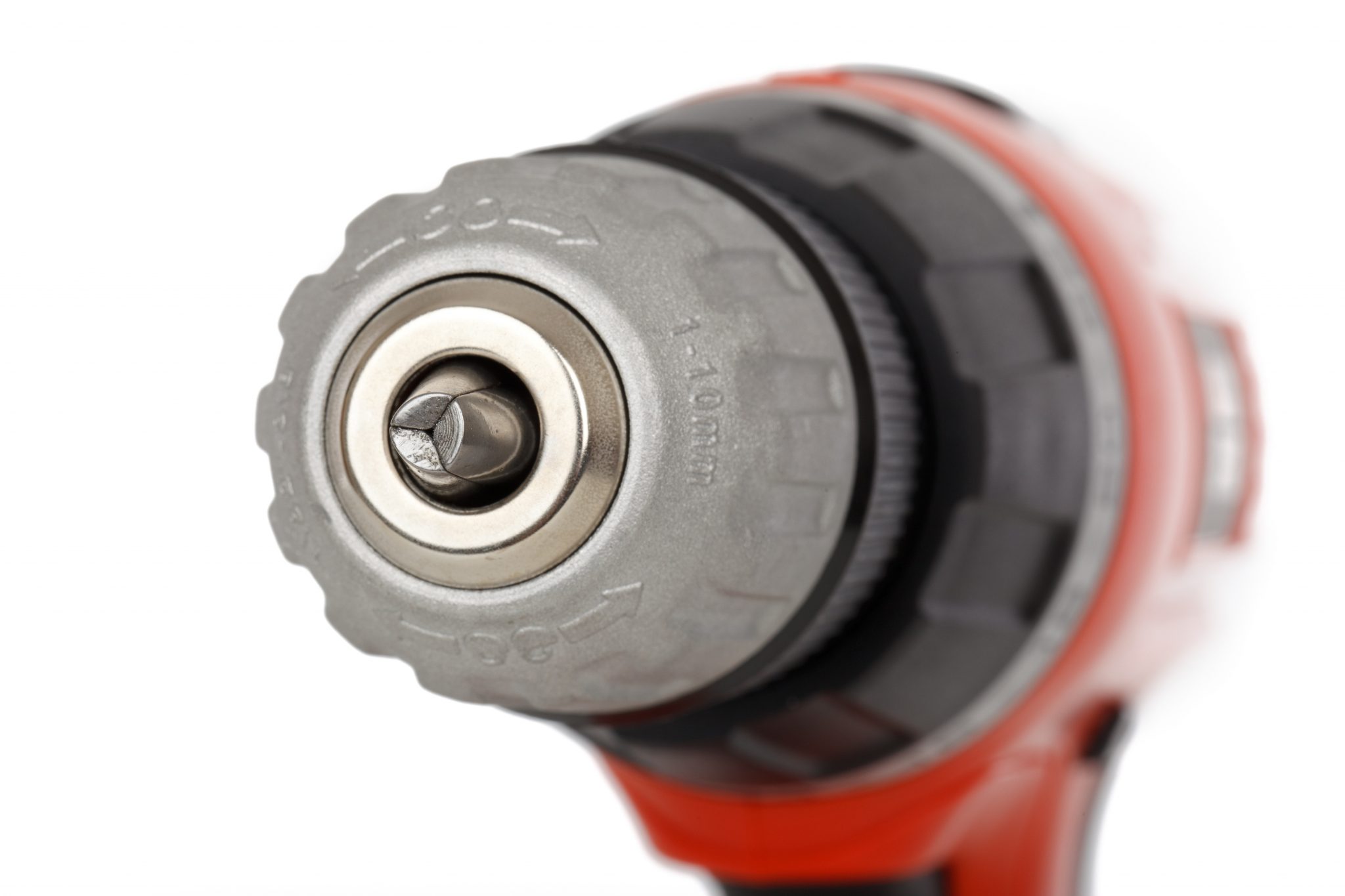
| Wall Material | Fastener Type | Size | Pilot Hole | MFG/ Vendor | Part |
| Brick | Torx Hex Washer Head Screw Anchor | 1/4″ x 1-3/4″ | 1/4″ | HILTI | KWIK-CON II+1/4″ x 1-3/4″ THWH St Steel |
| ITW Red Head Tapcon Screw Anchor | 1/4″ x 1-3/4″ | 1/4″ | Fastenal | 0131211 1/4″ x 1-3/4″ Hex Washer, Hex Drive, St Steel | |
| CMU | Torx Hex Washer Head Screw Anchor | 1/4″ x 1-3/4″ | 1/4″ | HILTI | KWIK-CON II+1/4″ x 1-3/4″ THWH St Steel |
| ITW Red Head Tapcon Screw Anchor | 1/4″ x 1-3/4″ | 1/4″ | Fastenal | 0131211 1/4″ x 1-3/4″ Hex Washer, Hex Drive, St Steel | |
| Mortar Joints | Not Recommended | ||||
| Poured Walls | Torx Hex Washer Head Screw Anchor | 1/4″ x 1-3/4″ | 1/4″ | HILTI | KWIK-CON II+1/4″ x 1-3/4″ THWH St Steel |
| ITW Red Head Tapcon Screw Anchor | 1/4″ x 1-3/4″ | 1/4″ | Fastenal | 0131211 1/4″ x 1-3/4″ Hex Washer, Hex Drive, St Steel | |
| Steel Studs | Ballistic Point, Single Fastener | 0.157-1″ | N/A | HILTI | X-U 27 P8 TH
Metal “Tophat” & 8mm Plastic |
| Aluminum Studs | Ballistic Point, Single Fastener | 0.157-1″ | N/A | HILTI | X-U 27 P8 TH
Metal “Tophat” & 8mm Plastic |
| Wooden Studs | Torx Hex Washer Head Screw Anchor | 1/4″ x 1-1/4″ | 1/4″ | HILTI | KWIK-CON II+1/4″ x 1-1/4″ THWH St Steel |
| ITW Red Head Tapcon Screw Anchor | 1/4″ x 1-1/4″ | 1/4″ | Fastenal | 0131211 1/4″ x 1-1/4″ Hex Washer, Hex Drive, St Steel | |
| EIFS | Varies, fasten through Exterior insulation and finish system (EIFS) to structure below. | ||||
Functionally, LiveWall can be placed as high as your building infrastructure, plumbing, and ability to access it for maintenance will allow. It is up to the discretion of the Owner/Architect/Engineer as to the appropriateness of the system at any given height, with all health, safety, and environmental factors to be considered.
Keep in mind that the taller the building, the more substantial the wind forces, particularly upward lifting wind forces. We recommend the use of limiting screws and our proprietary WindClip™ on living wall planters mounted more than 20′ from ground level. In regions prone to hurricanes or other high wind storms, we recommend using WindClips and limiting screws on all planters.
For more information, consult our engineering section.
Please email us your high resolution photographs of your LiveWall planted walls. We are always looking for new installations to feature on this site and in future editions of our idea guide and system catalog.
FUNCTION
First and foremost, LiveWall is designed by career horticultural professionals to grow healthy plants. From top to bottom, LiveWall’s vertical garden planters create a natural growing environment. We employ only our TopSide® technology, whereby the soil is oriented horizontally, unlike some competitors’ products, the plants grow upward from the top of the soil and the roots grow downward, as they do in nature. Likewise, with our unique RainRail™ mounting rail/irrigation conduits, the LiveWall System waters your plants naturally, like rain, but in evenly metered amounts along every tier of your living wall to sustain nutrient levels and plant health.
A living wall or vertical garden from LiveWall is unique in its simplicity, easy installation, and sustainability. Our WallTer® wall-planters are high-impact, UV resistant moldings, and the unique inserts make pre-growing and planting simple. The LiveWall plants are typically pre-grown for instant maturity, instant benefits, predictable maintenance, and low life-cycle costs.
Finally, a living wall from LiveWall is absolutely beautiful, and is attractive even when the plants are dormant. LiveWall can be used in both interior and exterior applications. It is effective for commercial, industrial, educational, governmental, and residential projects. Although beautiful and functional in suburban and rural installations, LiveWall is particularly suited for the urban dwelling environment and is scalable. Our vertical gardens work beautifully in the most intimate urban applications as well as large scale, multi-story commercial projects and, in either case, can be installed with great efficiency.
Design flexibility is enormous and ranges from the use of annual plants for colorful patterns and waves of flowers to long-lived succulents, perennials, herbs, and vegetables. To meet your requirements, LiveWall modules can arrive at the job site fully vegetated in WallTer Inserts. Maintenance is easy and replacement of the plants is quick and economical.
When installing living walls indoors, water containment is critical:
- The wall planters are rear-draining, and would include a rubber hose drain assembly to contain runoff water.
- The indoor wall planters hold twice the soil volume as the standard outdoor wall planters to provide ample growing space for a wide selection of tropical plants.
In outdoor green wall applications, the designer has more options for planter size, drainage method and water delivery.
- Large wall planters (recommended in hot climates and for holding larger perennials and grasses in cold climates) are available with a bottom drain or a rear drain option (when runoff water must be contained, such as over doorways or windows). These are spaced 16″ on center vertically.
- Standard wall planters have a bottom drain option, and are most commonly used with annuals, edibles, succulents, and a number of cold-winter hardy perennials.
- Choice of spray nozzles (typically recommended for outdoors), or drip irrigation (when site is sensitive to runoff from the plants).
A vertical garden, or living wall used to grow food such as vegetables, herbs and fruits, requires several things: proper orientation, lighting, water, drainage, and nutrition. LiveWall supports these basic plants needs and yields healthy vertical gardens.
Orientation
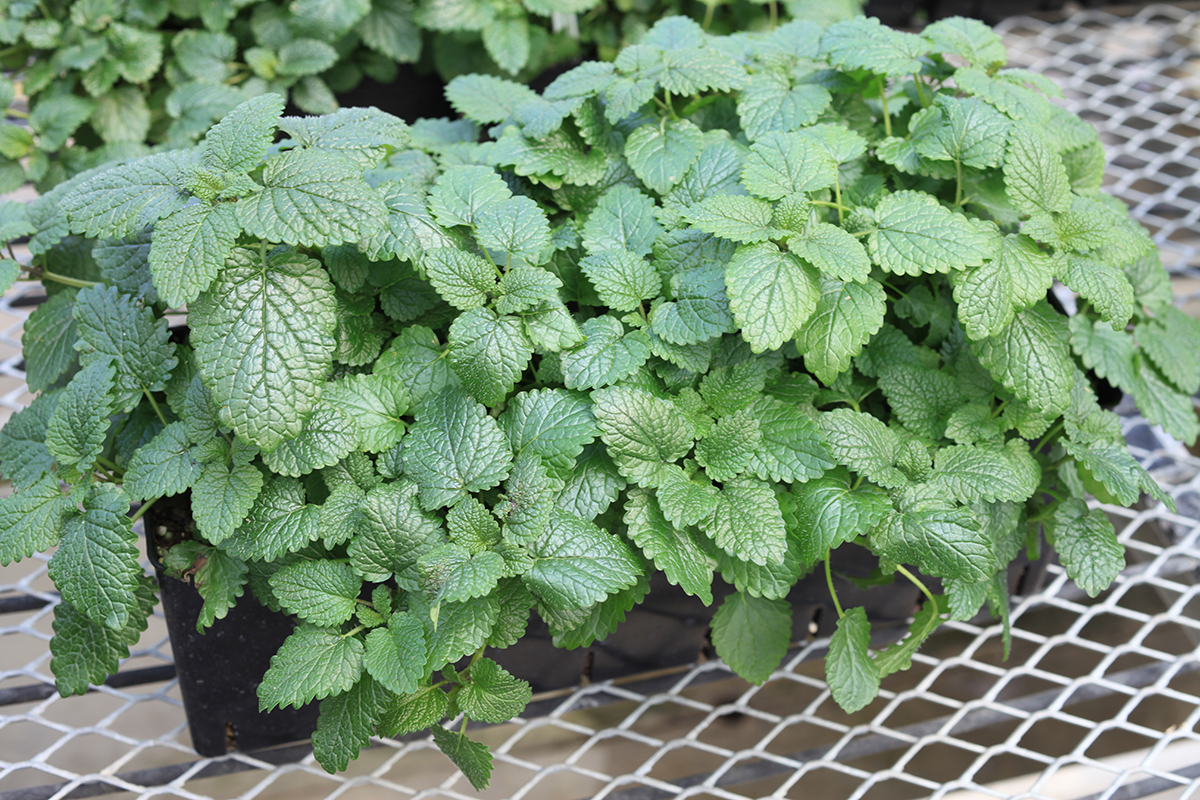
In nature, nearly every edible plant grows with its roots toward the center of the earth (positive geotropism) and its stems and leaves toward the sun (negative geotropism). Plants organs also tend to grow in a straight line (known as autotropism).
When the plants are turned sideways in an unnatural orientation that results in unnatural growth patterns, as is the design of a number of vertical garden systems, they divert energy from foliar and fruit production in effort to correct their orientation. Some systems designed in this manner may also be prone to soil erosion and can be difficult to water or fertilize.
LiveWall offers natural orientation, with the plant roots growing downward and stems and leaves growing upward.
Light
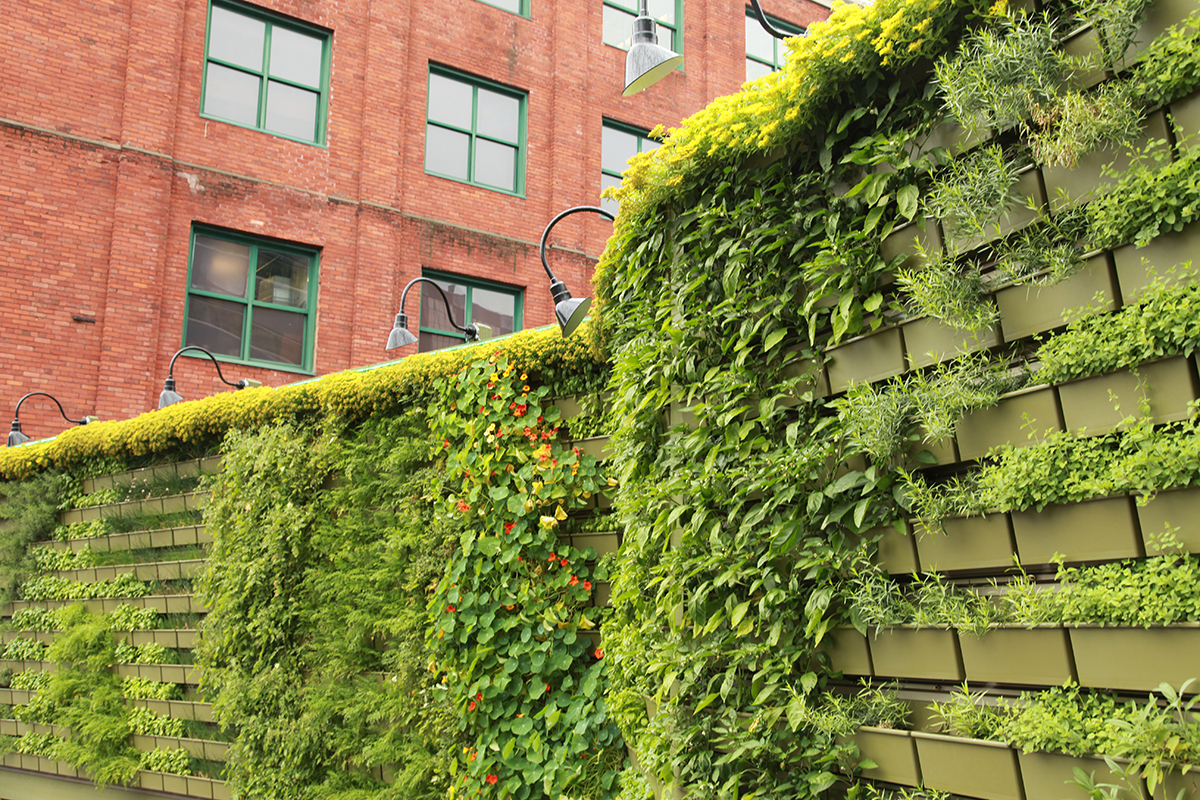
In most cases, typical indoor lighting is insufficient in intensity and inadequate in color spectrum to grow healthy edibles. Unfortunately, the small herb wall nested underneath your kitchen cabinets is not likely to perform well unless its facing a large, open window that gets several hours of direct sunlight daily, or supplemented with an intense light source of the right spectrum (such as the 15 degree Norb® bulb).
An exterior living wall planted with edibles and receiving sufficient direct sunlight can produce abundant yields, approximately 1 ounce per square foot per week of greens and herbs. Typically, food living walls perform best outdoors on south- or west-facing walls.
Water

As with any plants, supplying the optimum amount of water — not too little and definitely not too much — is critical to success. With the LiveWall system, young edible plants will likely require just one minute per day of irrigation during summer months. As they grow larger, the green wall likely will need two minutes per day of irrigation. In extreme, prolonged heat, longer run times may be needed.
Our seasonal irrigation chart recommends exact runs times based upon wall orientation and average daily temperatures. Our vertical gardens are shipped with controllers or hose timers (on smaller applications), which can be set to run on a schedule. So, you are free to go on vacation without needing to find someone to care for the plants. In volunteer-run or community gardens, this is insurance against gaps in staffing. And, for restaurants, this means one less distraction from spending time in the kitchen.
Drainage
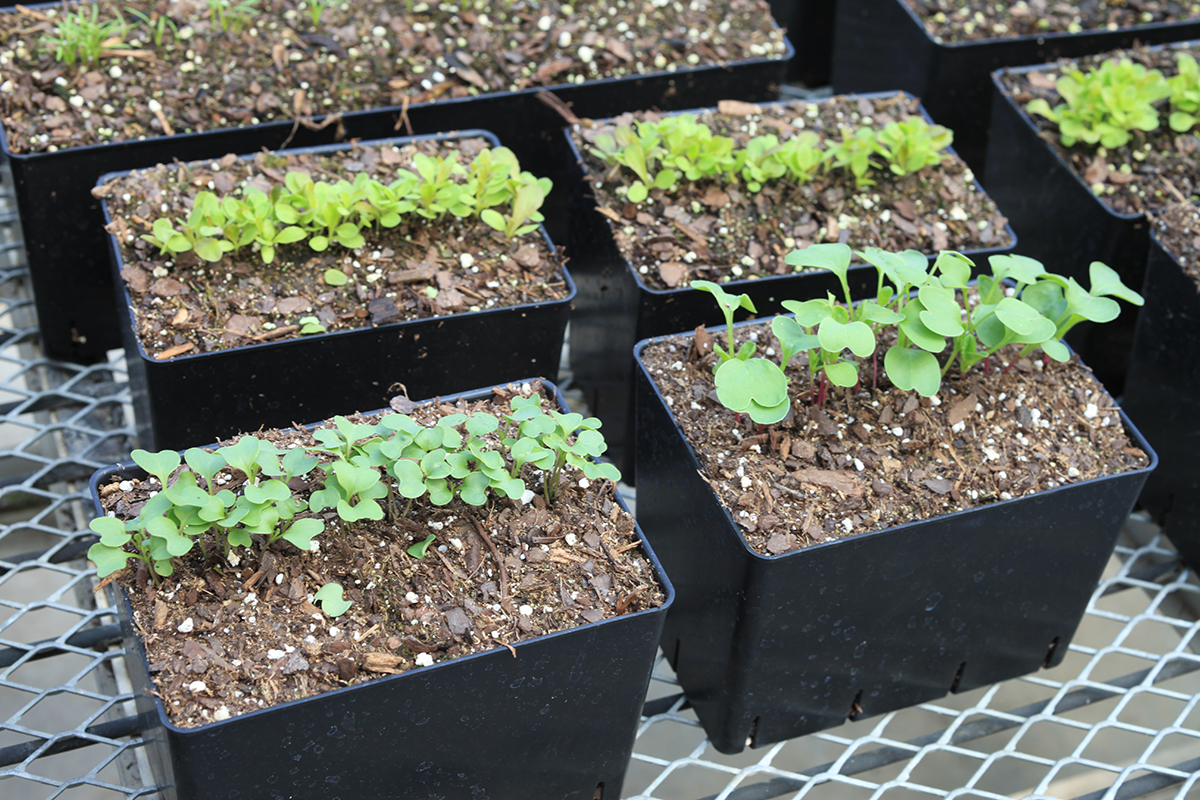
Proper drainage is perhaps the most overlooked plant need in competing vertical garden designs. Positive drainage is necessary to prevent diseases, fungal or bacterial infections, and salt build-up in living wall planters.
LiveWall systems are designed to drain for healthy roots.
Nutrition
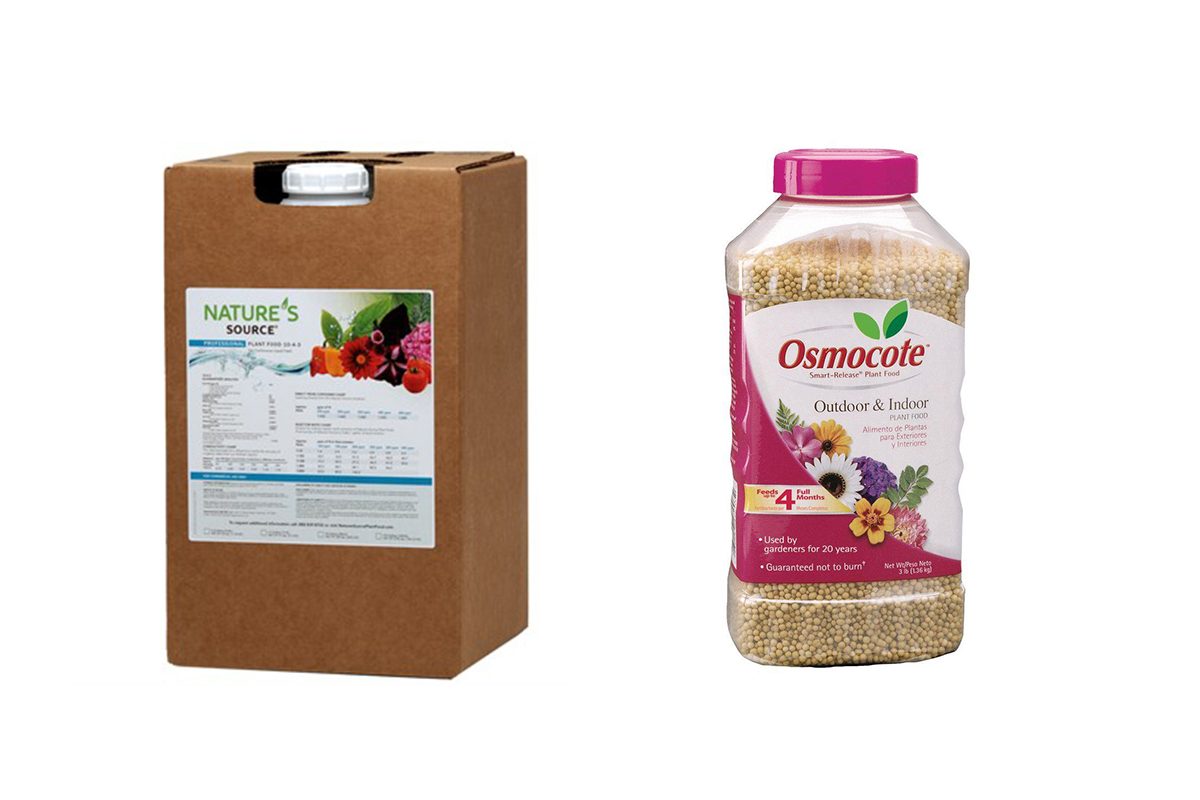
Vegetables, greens, and herbs require supplemental nutrition to produce foliage and fruit for consumption.
LiveWall makes it easy to fertilize. On outdoor systems, a granular, controlled-release fertilizer can be applied, typical once or twice per growing season. Alternatively, a fertigation unit feeds metered amounts of liquid plant food into the water at each irrigation event.
Easy replanting
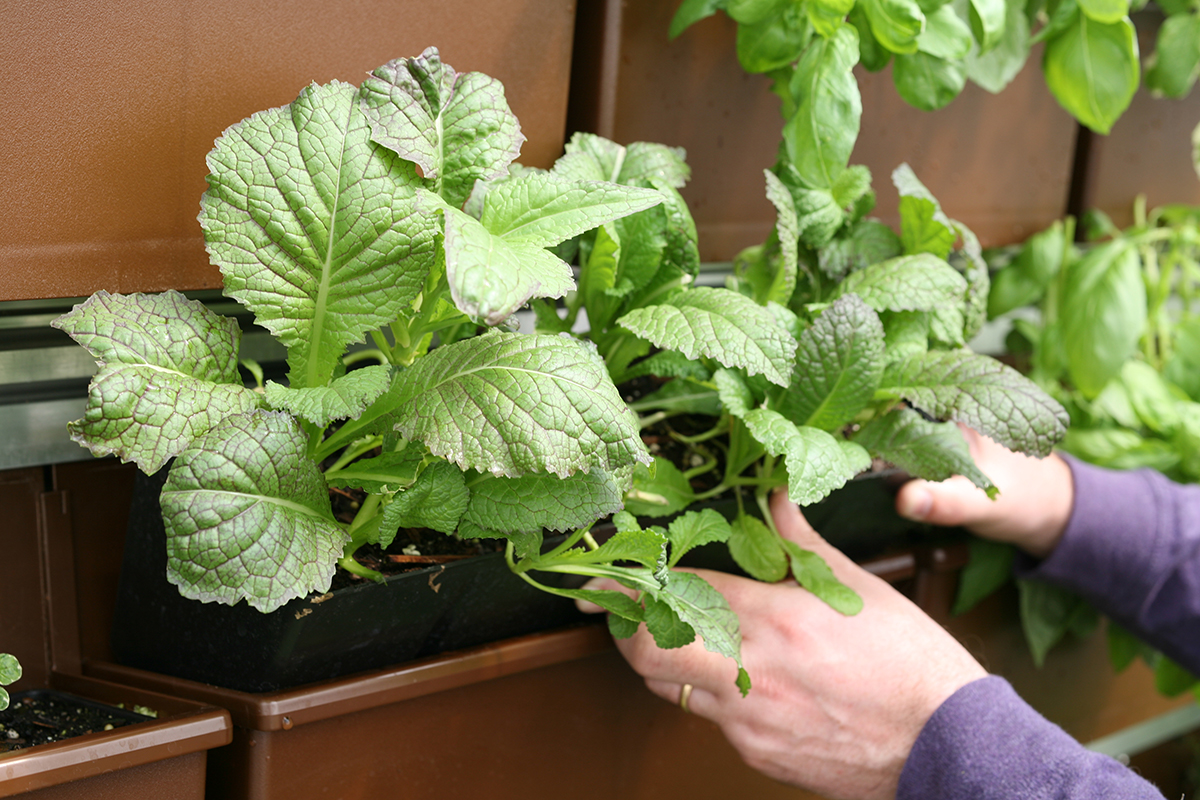
Most edibles by their nature are annuals and require replanting each growing season. With this in mind, we designed our vertical gardens to make the planting process easy. Removable planter inserts allow for the harvested, spent plants to be emptied and composted quickly and efficiently.
If desired, these inserts allow for young plants to be be started in a greenhouse. When the danger of frost has passed, the established vegetables or greens are simply dropped into place in the living wall.
LiveWall is a building facade system and as such is not designed to be fire resistant. The planter module material is rated at 780°F flash point and burns at 450°F.
The soil is relatively nonflammable, and the plants are variable. If fleshy, succulent plants are used, they will actually be a fire deterrent, and if grasses are used and allowed to dry out, they are potentially flammable.
INSTALLATION
LiveWall is a soil-based living wall system that utilizes molded-planters, and the structures must be designed in the increments required to accommodate full planters:
Horizontal spacing: 16″ on center
Vertical Spacing: Large Planters (Indoors or Outdoors): 16″ on center, Standard Planters (Outdoors): 12″ on center
Typically, the only components that you would need to cut to fit are the furring strips and irrigation lines. RainRail® irrigation conduit slot rails are manufactured in a variety of lengths divisible by 16 inches. Our design staff chooses appropriate RainRail lengths to eliminate field cutting.
In some cases, field conditions may not match the site plans provided to LiveWall and custom cutting may be required. In those cases, the rails must be cut to 16 inch increments.
When cutting irrigation conduit rails, do not use hack saw as it leaves rough burrs which will plug the irrigation nozzles. Instead use diamond blade on circular saw (We recommend the Slugger Metal Cutter by Jancy). Carefully clean the cut end of all burs and debris to prevent clogged nozzles or damage to RainRail fitting o-rings.
The LiveWall System requires an irrigation feed that is capable of providing sufficient water volume and pressure for each irrigation zone. The backflow preventer should be hooked up to a feed line that is at least 25PSI, not to exceed 85 PSI. Pressures over 85 PSI may damage fittings and lead to leaks.
Each valve requires 8-10 gpm per valve (zone), regulated to 15psi pressure, via pressure regulators that are placed upstream of each valve. In some cases, a booster pump may be required to ensure that the upper valves receive sufficient pressure and flow to water the planter array evenly.
LiveWall quotes mainline irrigation components for each project, and this includes backflow prevention, irrigation controller, and a micron filter to keep any waterborne debris from plugging up the irrigation nozzles. Installation contractors must source pipe and fittings to connect mainline to the irrigation valves.

LiveWall is usually installed by professional contractors specializing in landscape, irrigation, plumbing, siding, or general construction.
Need a referral to a local contractor?
Yes. Among the commercial-grade planted living wall products, LiveWall is among the simplest to install.
LiveWall installation requires little guesswork, and can be completed with common tools of typical tradesmen. The irrigation system is integrated into the planter array, installation steps are spelled out in our installation guide and video, and custom shop drawings are produced with each order.
Fast easy installation is the norm, and this equates to economical installation.
Our time studies indicate that it takes an average 1/3 (.33) man- hour of labor per square foot for most LiveWall installations. It likely will be somewhat less for large, rectangular applications and greater for small or complex-shaped applications.
The infrastructure of the LiveWall system can be installed in every season, with some caveats:
- The irrigation system should not be activated at temperatures at or below freezing. Thus, the irrigation system will need to wait to be tested until temperature climbs above freezing.
- Nozzles should not be installed until the irrigation system has been tested and run to flush out any debris introduced during the installation.
- Generally, plants should be not be installed during winter. We recommend that they are held at the nursery until the spring.
To minimize installation time, please familiarize yourself with the installation instructional video.
FASTENERS
The LiveWall system includes furring tracks, which provide flexibility in design over a number of different applications. The building wall design and means of fastening LiveWall to the wall system are the responsibility of the local architect and/or structural engineer and installation contractor and must comply with local codes. The installation contractor will be responsible to select appropriate anchors.
We contacted Fastenal and HILTI for their recommendations for various types of wall structures, and compiled them below (based on 18 pounds per square foot). Contact your preferred anchor manufacturer to confirm suitability for your application. Please note that adhesives should not be used.

| Wall Material | Fastener Type | Size | Pilot Hole | MFG/ Vendor | Part |
| Brick | Torx Hex Washer Head Screw Anchor | 1/4″ x 1-3/4″ | 1/4″ | HILTI | KWIK-CON II+1/4″ x 1-3/4″ THWH St Steel |
| ITW Red Head Tapcon Screw Anchor | 1/4″ x 1-3/4″ | 1/4″ | Fastenal | 0131211 1/4″ x 1-3/4″ Hex Washer, Hex Drive, St Steel | |
| CMU | Torx Hex Washer Head Screw Anchor | 1/4″ x 1-3/4″ | 1/4″ | HILTI | KWIK-CON II+1/4″ x 1-3/4″ THWH St Steel |
| ITW Red Head Tapcon Screw Anchor | 1/4″ x 1-3/4″ | 1/4″ | Fastenal | 0131211 1/4″ x 1-3/4″ Hex Washer, Hex Drive, St Steel | |
| Mortar Joints | Not Recommended | ||||
| Poured Walls | Torx Hex Washer Head Screw Anchor | 1/4″ x 1-3/4″ | 1/4″ | HILTI | KWIK-CON II+1/4″ x 1-3/4″ THWH St Steel |
| ITW Red Head Tapcon Screw Anchor | 1/4″ x 1-3/4″ | 1/4″ | Fastenal | 0131211 1/4″ x 1-3/4″ Hex Washer, Hex Drive, St Steel | |
| Steel Studs | Ballistic Point, Single Fastener | 0.157-1″ | N/A | HILTI | X-U 27 P8 TH
Metal “Tophat” & 8mm Plastic |
| Aluminum Studs | Ballistic Point, Single Fastener | 0.157-1″ | N/A | HILTI | X-U 27 P8 TH
Metal “Tophat” & 8mm Plastic |
| Wooden Studs | Torx Hex Washer Head Screw Anchor | 1/4″ x 1-1/4″ | 1/4″ | HILTI | KWIK-CON II+1/4″ x 1-1/4″ THWH St Steel |
| ITW Red Head Tapcon Screw Anchor | 1/4″ x 1-1/4″ | 1/4″ | Fastenal | 0131211 1/4″ x 1-1/4″ Hex Washer, Hex Drive, St Steel | |
| EIFS | Varies, fasten through Exterior insulation and finish system (EIFS) to structure below. | ||||
IRRIGATION
Vertical gardens (living walls) are different from ground level landscapes in many ways. Notably, irrigation systems must compensate for the challenge of gravity, which pulls water to the lowest point.
LiveWall’s team solved this challenge with a unique flush valve system that equalizes water delivery from top to bottom. We have been granted a new patent for this innovative method of equalizing water flow in a living wall.
This means easier maintenance and better overall plant performance.
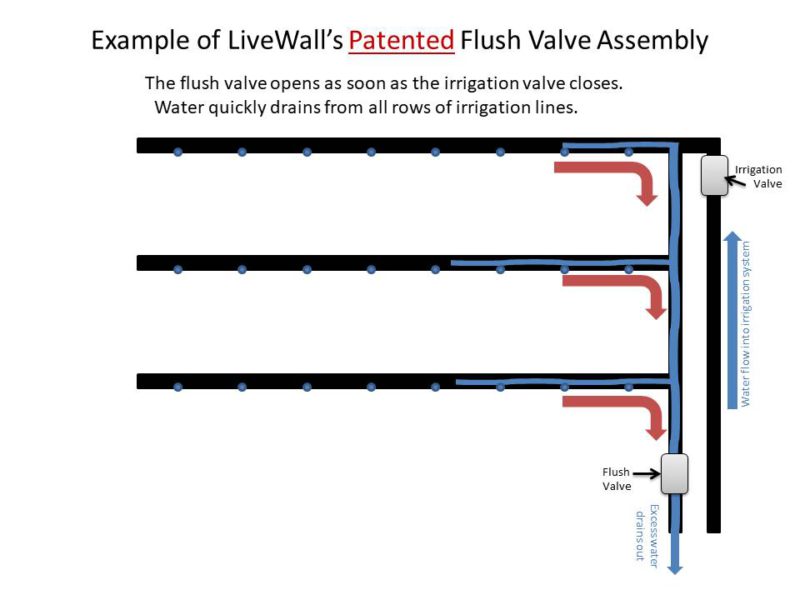
The amount of water that green wall plants need can vary greatly. For this reason, we have developed specific irrigation recommendations based upon the plant type, wall orientation/ light intensity, maturity, and average daily temperatures. How windy and exposed the site is may have an impact, but it is good to start with the recommendations outlined in the seasonal irrigation chart below and adjust accordingly.
Irrigation Chart: Outdoor LiveWall with Standard Size Planters and Spray Irrigation
The LiveWall System requires an irrigation feed that is capable of providing sufficient water volume and pressure for each irrigation zone. The backflow preventer should be hooked up to a feed line that is at least 25PSI, not to exceed 85 PSI. Pressures over 85 PSI may damage fittings and lead to leaks.
Each valve requires 8-10 gpm per valve (zone), regulated to 15psi pressure, via pressure regulators that are placed upstream of each valve. In some cases, a booster pump may be required to ensure that the upper valves receive sufficient pressure and flow to water the planter array evenly.
LiveWall quotes mainline irrigation components for each project, and this includes backflow prevention, irrigation controller, and a micron filter to keep any waterborne debris from plugging up the irrigation nozzles. Installation contractors must source pipe and fittings to connect mainline to the irrigation valves.

Side Irrigation Feed
Advantages
Drawbacks
Recommendations
Consider making a hinged facing material over irrigation feed lines for ease of future access for inspection and maintenance.
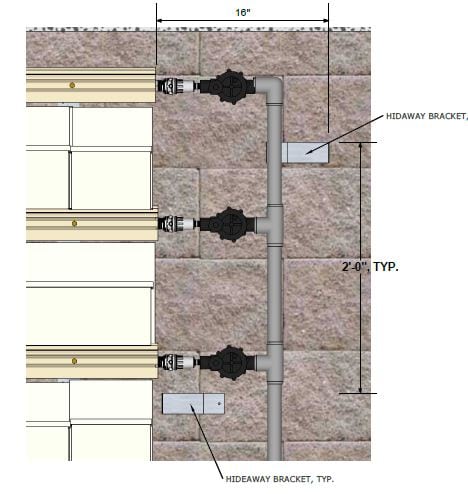
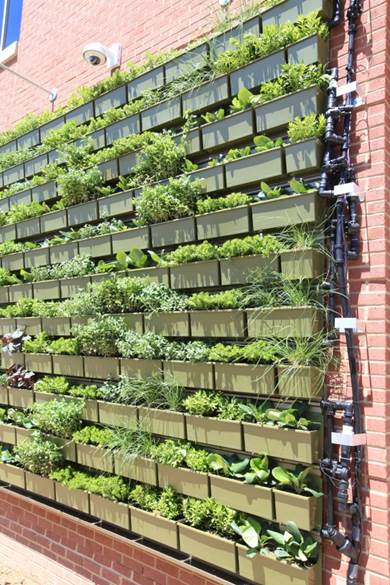
Facing material not yet installed
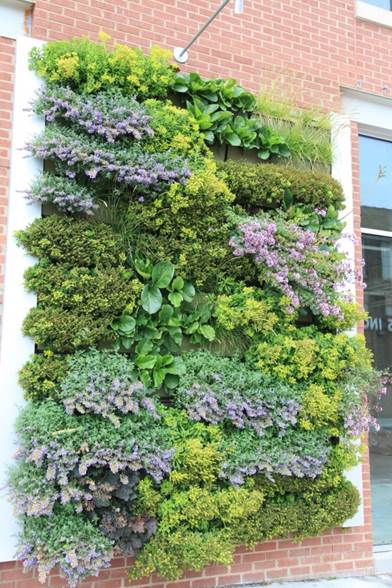
Rear Irrigation Feed
Advantages
Drawbacks
Recommendations
May require side treatment depending on site conditions and desired aesthetic. On new construction, consider recessed walls to reduce the living wall profile. For the plants to be flush with the adjacent wall surface, recess green wall area by 11 inches with Standard-sized planters and 13 inches for Large-sized planters. To conceal the thicker furring strips only, recess green wall area 5 inches.
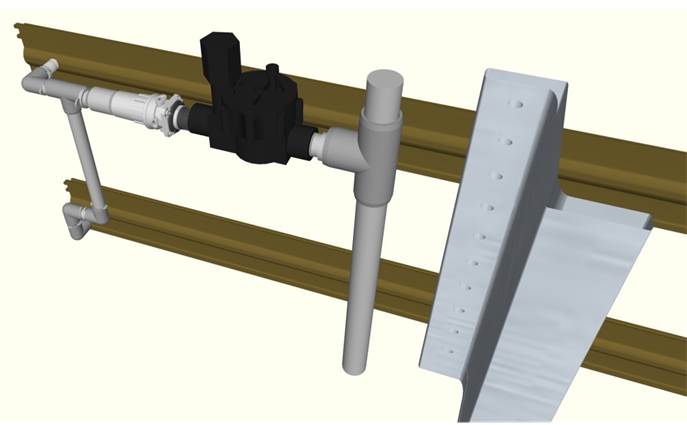

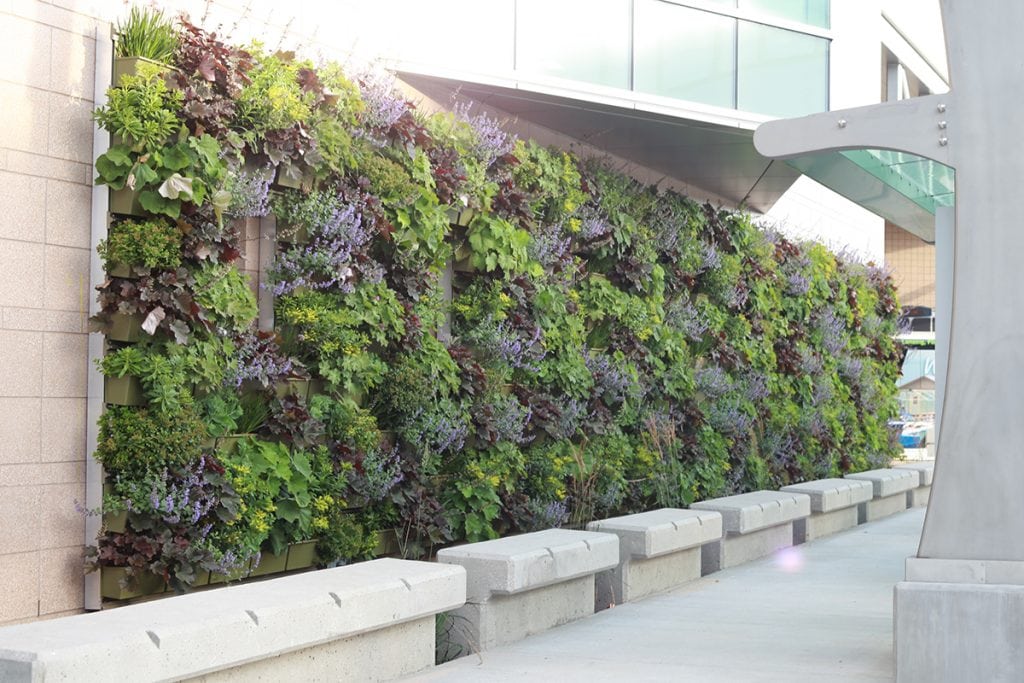
Descaling Cartridges Ensure Water Flow
Properly treated hard water poses no health risks and actually provides beneficial nutrients to LiveWall plants. However, buildup of calcium or iron scaling from untreated hard water can potentially impair the flow of water through the irrigation nozzles. The cost of treating hard water is not an expensive add-on to a LiveWall System installation.
In cases of hard water, use phosphate descaling system to prevent irrigation system blockage or failure. This can be purchased from LiveWall. Descaling cartridges should be replaced annually and can be reordered from LiveWall.
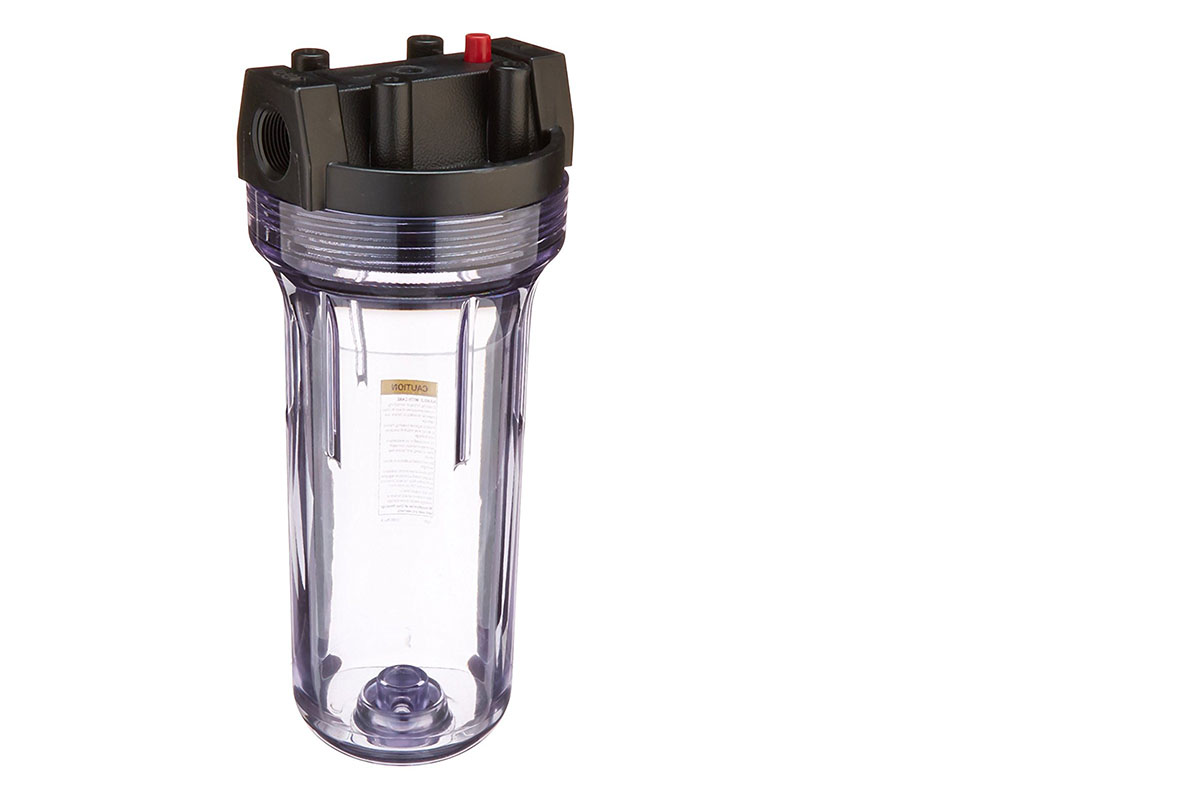
Large Projects
Very large projects (over 2000 square feet) may require additional treatment. On larger walls, an alternative chemical treatment system may be preferred. In these cases, LiveWall recommends CH2O, Inc.
For a free water test to determine the type of hardness, how much is in the water, and the cost of treating 10,000 gallons of your water, send them a sample.
CH2O
4141 Boston Harbor Rd. NE
Olympia WA, 98506
Attn. Bruce Kooi
Phone: 360-259-6493
On outdoor walls, the higher up you go, the windier the conditions tend to be, and you will get more evaporative drying. To compensate for this additional loss, adjust to run the irrigation longer on the upper zones. You can expect to lose about ½ PSI of pressure per each foot of elevation. This corresponds to about ½ PSI for each tier of the LiveWall system and on very tall walls, booster pumps may be needed to sustain pressure. Plumbing should be sized and engineered accordingly.
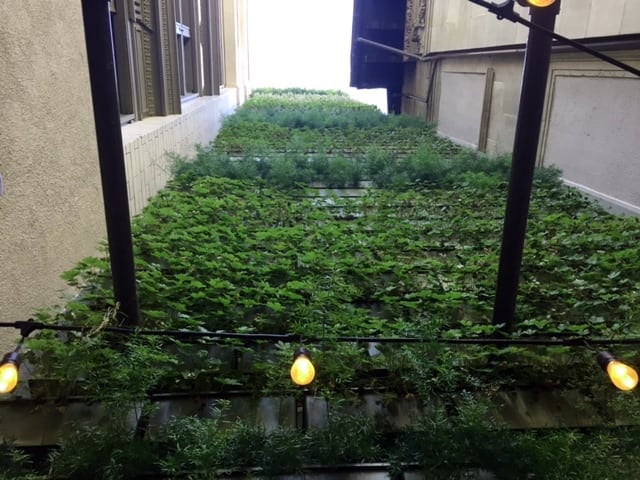
In northern climates, deactivate the system in fall by blowing out the irrigation lines with compressed air, not to exceed 20 psi, and turning the irrigation controller off. Empty lines and valves are required to avoid freeze thaw damage, so this needs to be done before the first hard freeze of the system.
After blowing the system out, the rain may effectively water the top few rows, and keep it moist until freezing occurs. But, the lower levels can still dry out and should be monitored and kept moist unless frozen.
It is not uncommon to need to irrigate a few times during wintertime warm ups. If needed, you can water with a hose and hand-held sprayer or use the built-in system, then blow it out afterward until the danger of freezing has passed.
Important
If you have perennial plants, throughout winter, the soil should be checked during periods of thawing to ensure proper moisture. The soil should be moist, not wet or boggy, or dry, whenever the soil is not frozen solid.
Warm Climate
In climates with warm winter weather, irrigation will need to continue throughout the winter. Less water is typically required during the coldest months. Follow the LiveWall irrigation chart to adjust the run time and frequency as the temperatures change.
In the event of an occasional freeze, it is important to blow out the irrigation lines an prevent cracks and leaks, and reactivate the system as the weather warms and plants dry out.
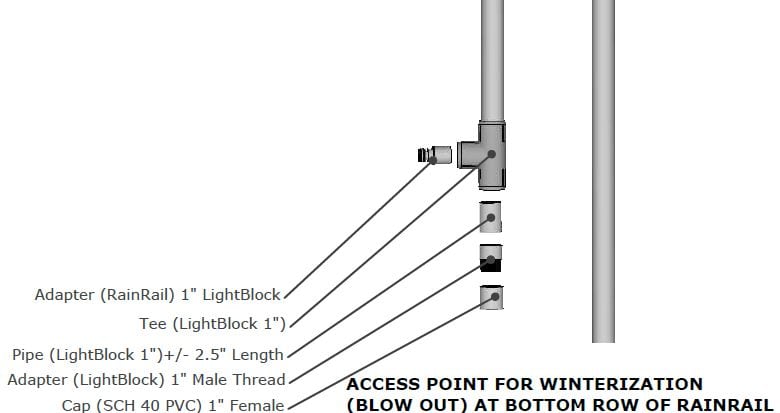
Important
Your outdoor living wall’s irrigation system may need to be blown out and reactivated multiple times during the winter months to sustain perennials.
Cold Climate
To sustain perennial plants through the winter, the soil must not excessively dry out. The plants in the living wall will not receive sufficient moisture from rainfall due to its vertical nature, and because the planters are exposed, the plants will enter dormancy earlier than the plants in the ground will. Therefore, you will likely need to water your perennial plants before the danger of freezing has passed and typically much sooner than you begin irrigating your at grade landscape.
- If the application is planted with perennial plants and it is large, or commercial scale, activate the system as needed – but do so only on warm days where water can flow and drain freely, and only enough to remoisten dry soil. The irrigation system will need to be blown out after each use until the danger of freezing has passed.
- If the application is small scale, then wintertime watering can be implemented as indicated above, or simply by using a hand held hose or watering can as the weather necessitates.
LIGHT
Lighting is critical to the success of your living wall. In nearly every indoor application, supplemental lighting will be necessary to ensure the proper intensity and spectrum for plant growth. Designers should specify fixtures, bulbs, and placement to ensure that the living wall is evenly lit and receives the full spectrum of lighting required to grow healthy plants.
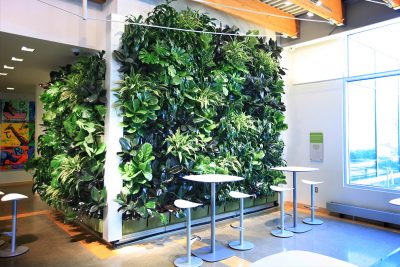
Light intensity is a measure of light energy hitting the plant surface and is also very important to plant health. For traditional interior lighting applications, light intensity is discussed in terms of foot-candles of light energy. While foot-candles is not the preferred measure of light intensity by horticultural scientists (who prefer a measurement in terms of “photo active radiation”), we have found that foot-candles will suffice with a proven light source, such as LiveWall’s Norb® Botanic. And, for most tropical foliage plantings 200-400 foot-candles of light energy hitting the foliage, is sufficient.
LiveWall, LLC has developed a plant selection and pairing guide for indoor plants based upon their lighting and water needs, and growth habit. This LiveWall design guide should be consulted for the correct light intensity for the type of plants that one intends to use. We have categorized the plants into lighting needs as follows:
Bright Light
Indoor location with direct light from a south or west exposure where the plants receive 2 or more hours of direct sun, but preferably not during the hottest part of the day.
Artificial Bright Light is approximately equal to a four tube florescent fixture in close proximity to the planting, in the range of 400 to 600+ foot candles, for 12 to 15 hours per day.
Medium Light
Indoor location with direct light for a couple of hours in the morning or afternoon (from east or west facing windows), or from a south facing window provided the location is several feet interior of south facing windows.
Artificial Medium Light is approximately equal to a two tube florescent fixture, 2 or 3 feet from the foliage, in the range of 100 to 400 foot candles for 12 to 15 hours per day.
Low Light
Low Light pertains to an indoor location that is not close to windows or supplemental lighting—typically a north or east exposure.
Artificial Low Light is enough to read a newspaper, in the range of 25 to 100 foot candles for 12 to 15 hours per day.
For a copy of the LiveWall Indoor Plant Design Guide, contact us at sales@livewall.com or call 877-554-4065.
Light fixtures should be adjustable for direction and are typically located in front of the living wall and attached to or suspended from the ceiling. Occasionally, they are located at the bottom or sides of the LiveWall structure, to create proximity to the plants, and thereby provide sufficient light intensity across the entire wall surface. Often times, track lighting is used as it is contemporary, comes with many fixture options, and is relatively inexpensive.
In respect to the light source (bulb), the key considerations are proper light spectrum and light intensity. Plants tend to respond to blue and red wavelengths and in a proportion not available from incandescent or typical office-type LED lights. There are, of course, LED grow lights composed of red and blue diodes—but they tend to cast a purple light which looks odd, unnatural, and unattractive.
For this reason, LiveWall LLC developed the Norb® (Nutri-Orb) Botanic, a specialized White-Light LED that provides the right spectrum for growing plants. With Norb® bulbs, the plants can be healthy and “look right under white.”
Where on the ceiling should lighting be affixed?
While each light source may have a different beam angle and intensity, it is important to keep in mind:
- The distance that the planters sit from the wall.
- The distance that the plants may extend from the planters. This distance will be greater with large-leaved, billowy plants.
As a rule of thumb, when using Norb® Botanic to light your indoor LiveWall, we recommend setting the track lighting fixture back 7′ from the building wall. This should allow ample room for the vegetation and support even light distribution.
Track lighting offers flexibility
This living wall installation is lit by 12 Norb® bulbs (6 with 30 degree beam angle and 6 with 15 degree beam angle) directed at the 8’ x 8’ and 11’ x 11’ walls.
These bulbs are angled from track lighting attached to the 12 foot ceiling. This configuration provides plenty of light.
The following lights are NOT recommended for growing plants:
Halogen
Halogen lights do not have the proper spectral components for growing plants.
High Pressure Sodium
High Pressure Sodium lights are yellow in appearance. Their spectrum supports flowering but lacks the spectrum needed to support indoor foliage plants.
They may support living wall plants only when combined with a Metal Halide light.
Ordinary LEDs
LED lights that are commonly used in office or exterior lighting—typically with color temperatures of 3000K-4500K— are not suitable for plant growth.
Specify Norb Botanic when LED lighting is preferred.
Plants need a dark period to rest and prevent metabolic fatigue. Therefore, grow lights should only be run 12-15 hours maximum per day—typically from 7 AM to 8 or 9 PM (to mimic light conditions in tropical regions). The rest of the time, they should be in darkness, or near darkness.
If security lighting is required in the area of the LiveWall, it should be of very low intensity and not directed toward the plants.
Do not run Norb® bulbs (or any bulb labeled as supporting plant growth) on the green wall for more than 15 hours per day.

We recommend running the lighting for the living walls on a dedicated outlet programmed to run for 14 hours per day.
The LiveWall system does an excellent job of growing a broad array of greens, lettuce and herbs. When those plants are grown indoors, the plants must receive enough light of the correct spectrum.
Fortunately, we have a solution for that! We have tested and selected a lighting product with the best overall plant growth performance and value. We developed an ingenious bracket for mounting these lights and allowing for simple plant replacement or system inspection.
Contact your LiveWall representative to learn more; call us at 877-554-4065.
MAINTENANCE
Plants need a dark period to rest and prevent metabolic fatigue. Therefore, grow lights should only be run 12-15 hours maximum per day—typically from 7 AM to 8 or 9 PM (to mimic light conditions in tropical regions). The rest of the time, they should be in darkness, or near darkness.
If security lighting is required in the area of the LiveWall, it should be of very low intensity and not directed toward the plants.
Do not run Norb® bulbs (or any bulb labeled as supporting plant growth) on the green wall for more than 15 hours per day.

We recommend running the lighting for the living walls on a dedicated outlet programmed to run for 14 hours per day.
The amount of water that green wall plants need can vary greatly. For this reason, we have developed specific irrigation recommendations based upon the plant type, wall orientation/ light intensity, maturity, and average daily temperatures. How windy and exposed the site is may have an impact, but it is good to start with the recommendations outlined in the seasonal irrigation chart below and adjust accordingly.
Irrigation Chart: Outdoor LiveWall with Standard Size Planters and Spray Irrigation
On outdoor walls, the higher up you go, the windier the conditions tend to be, and you will get more evaporative drying. To compensate for this additional loss, adjust to run the irrigation longer on the upper zones. You can expect to lose about ½ PSI of pressure per each foot of elevation. This corresponds to about ½ PSI for each tier of the LiveWall system and on very tall walls, booster pumps may be needed to sustain pressure. Plumbing should be sized and engineered accordingly.

In northern climates, deactivate the system in fall by blowing out the irrigation lines with compressed air, not to exceed 20 psi, and turning the irrigation controller off. Empty lines and valves are required to avoid freeze thaw damage, so this needs to be done before the first hard freeze of the system.
After blowing the system out, the rain may effectively water the top few rows, and keep it moist until freezing occurs. But, the lower levels can still dry out and should be monitored and kept moist unless frozen.
It is not uncommon to need to irrigate a few times during wintertime warm ups. If needed, you can water with a hose and hand-held sprayer or use the built-in system, then blow it out afterward until the danger of freezing has passed.
Important
If you have perennial plants, throughout winter, the soil should be checked during periods of thawing to ensure proper moisture. The soil should be moist, not wet or boggy, or dry, whenever the soil is not frozen solid.
Warm Climate
In climates with warm winter weather, irrigation will need to continue throughout the winter. Less water is typically required during the coldest months. Follow the LiveWall irrigation chart to adjust the run time and frequency as the temperatures change.
In the event of an occasional freeze, it is important to blow out the irrigation lines an prevent cracks and leaks, and reactivate the system as the weather warms and plants dry out.

Important
Your outdoor living wall’s irrigation system may need to be blown out and reactivated multiple times during the winter months to sustain perennials.
Cold Climate
To sustain perennial plants through the winter, the soil must not excessively dry out. The plants in the living wall will not receive sufficient moisture from rainfall due to its vertical nature, and because the planters are exposed, the plants will enter dormancy earlier than the plants in the ground will. Therefore, you will likely need to water your perennial plants before the danger of freezing has passed and typically much sooner than you begin irrigating your at grade landscape.
- If the application is planted with perennial plants and it is large, or commercial scale, activate the system as needed – but do so only on warm days where water can flow and drain freely, and only enough to remoisten dry soil. The irrigation system will need to be blown out after each use until the danger of freezing has passed.
- If the application is small scale, then wintertime watering can be implemented as indicated above, or simply by using a hand held hose or watering can as the weather necessitates.
Anything living requires maintenance, including LiveWall. Due to the design of the LiveWall system, maintenance requirements will be simple and will vary with the type of plants that have been chosen. LiveWall provides complete maintenance guides with suggestions for each category of plant.
Annual plants may not require much care at all. However, at the beginning of each year they will need to be replaced with new fully-grown annuals. Simply remove the living wall planter inserts from last year, and drop in the new preplanted inserts for the current year. For more information, see our planting guide.
If perennial plants are used, they will be subject to the typical maintenance of ground level perennial plantings: removal of spent flower stalks, fertilization, and trimming stems and foliage if they become overgrown. If the plants are deciduous (i.e., they drop their leaves in fall), they will need to be pruned back to the soil level each spring before they break dormancy. They will also typically require periodic wintertime watering during dry periods above freezing temperature.
Maintenance is Simple, Yet CRITICAL
The key to healthy living walls is short, frequent visits. We recommend twice monthly inspections, and provide a monthly email with seasonally relevant instructions to all owners and contractors caring for a LiveWall brand system. To receive these updates, submit your email in this form.
No. The LiveWall System is not designed to be climbed on for maintenance or any other reason. It is designed to hold plants, not a human body. Climbing on the system could lead to product failure and injury. Be sure to keep children off the vertical garden tiers, as well.
Vertical garden plants will be damaged or killed by deicing chemicals. If the living wall is near walkway areas that are shoveled, use care to throw the snow in another direction as it may contain deicing agents.
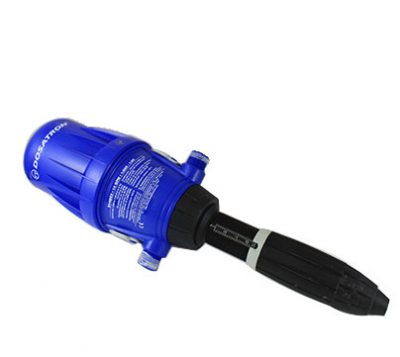
Automatic Fertilization
LiveWall systems may be purchased with a fertilizer injector that is tied into the irrigation system.
The fertigation system injects a low dose of fertilizer each time your living wall is irrigated.
LiveWall supplies an organic liquid fertilizer concentrate that must be diluted prior to use. For more information, download the injector operation and dilution instructions.
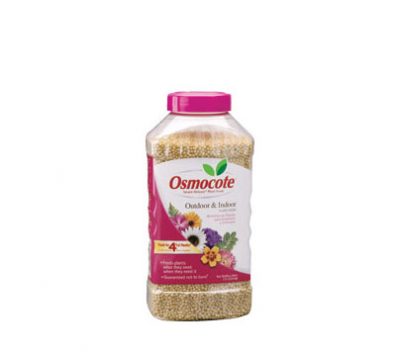
Manual Slow Release Granular Fertilizer
Outdoor walls and hand-watered indoor walls may be fertilized once annually using a granular slow release fertilizer such as Scotts Osmocote®.
A single spring application is usually sufficient to feed plants through the growing season. Shake one teaspoon of fertilizer evenly across the soil surface of each full-width, Standard sized wall planter. Apply half as much for half-width Standard size planter and twice as much for Large planters.

Manual Liquid Fertilizer
Every 6 to 12 months, indoor or outdoor living walls which do not have automatic fertigation may be fed with a higher concentration of liquid feed.
Fertilizer may be applied manually according to the label directions using a watering can or a hose.
IMPORTANT: Do not use granular fertilizer for indoor walls with automatic irrigation. The granules require water to run over the surface to activate, and LiveWall indoor systems include drip stakes that inject water directly into the soil.
Application rates will vary with formulation. In all cases, follow directions on package label.
All applications of fertilizer are the sole responsibility of the applicator.
The need to replant during spring will vary with the severity of winter, diligence to proper care, and plant material.
Annuals, Vegetables, & Herbs
These plants require replacement at the beginning of every growing season. There are two ways of doing this:
- Drop off your empty planter inserts at a local nursery to have them grow the plants in their greenhouses. If they begin 6-8 weeks prior to your last frost date, you can begin harvesting right away once you plant them.
- Plant the liners yourself using 2 or 3 inch starter plants from your local garden center.
In any event, it is important to thoroughly wash out the planter inserts and start with fresh potting soil.
Soil Type
Organically rich potting soil, available at every garden center.
Perennials & Tropicals
By definition, perennials, including tropical perennials, have the potential to live forever. But, when grown in a container such as the living wall planter insert, they will eventually become root-bound, and at some point will need to be replaced, or divided and replanted. How long they will go with out the need for division is a factor of the particular plant’s habit, its root characteristics, and climate. Many perennials are expected to last up to three years before becoming root-bound in the LiveWall system.*
How do you know when it is time to replant and divide a perennial? You know it is time when the plant has become so root-bound that the growth and flowering become stunted. When this occurs, the plants can be removed, divided and replanted. Or, they can be composted and replaced with new plants. Replacements should be done during spring or early summer so that the plants become well established prior to winter.
Soil Type
Potting soil containing pine bark, as it decomposes very slowly.
Sedums & Succulents
Because most Sedums and succulents have very fine root systems, they have the potential to survive for many years without becoming root bound. Some could be sustained for over a decade depending on the species and care. As such, they need to be potted in a soil that will hold its structure for many years.
Soil Type
“Alpine” soil-type that is gritty and highly inorganic (similar to blends used for green roofs).
*Consider a vinyl cover to reduce winter perennial plant losses.
Managing moisture of perennial plants during winter can be challenging. LiveWall supplies grommeted, vinyl winter covers to aid in the overwintering of “perennial” plants in cold winter climates.
Why is this needed?
In cold winters, especially those with sunny windy conditions, the plants can literally be “freeze-dried.” By covering with a vinyl winter cover, this effect is greatly lessened. Winter covers act to moderate temperature highs and lows, block the wind, and hold in moisture.
What do they look like?
They are printed with an attractive mid-green, translucent Boston ivy graphic.

How are they used?
- Winter covers are applied just before the soil freezes, approximately December 1 in Michigan for example, and only after THROROUGHLY WATERING THE SOIL (the day before covering). The plants should not be pruned before they are applied. This helps hold in moisture.
- Winter covers are typically removed during mid to late March in Michigan for example. Upon removal, plants are immediately and thoroughly watered (and thereafter watered according to need—see LiveWall watering chart), but not pruned until after danger of late frost, as they will have tender new shoots among last year’s foliage and stems.
How are they attached?
- They are tightly applied with zip ties, bungee straps, or ¼ inch nylon rope. They can be anchored into the support wall, the LiveWall frame, or the planter boxes. Some installers drill small holes in the top or bottom lip of the planters, which is relatively unnoticeable. Winter covers should be tightly attached to structure, with every grommet. If the wall is large, it will require multiple covers, and the grommets in the middle should be attached to the planters or structure, rather than just connected together. All grommets should be tightly attached to structure.
- If the site is very windy, consider adding some strapping or roping material across the face of the cover, to prevent billowing or flapping in strong winds.
What sort of results can I expect?
All walls, exposures, and weather conditions are unique, so there are no guarantees. However, when winter covers have been properly used, they have greatly improved overwintering success—with some walls in Michigan experiencing nearly 100% survival.


PLANTING
The makeup of the growing medium depends upon the plants you choose to grow, as the media should have last to match the life expectancy of the green wall plant.
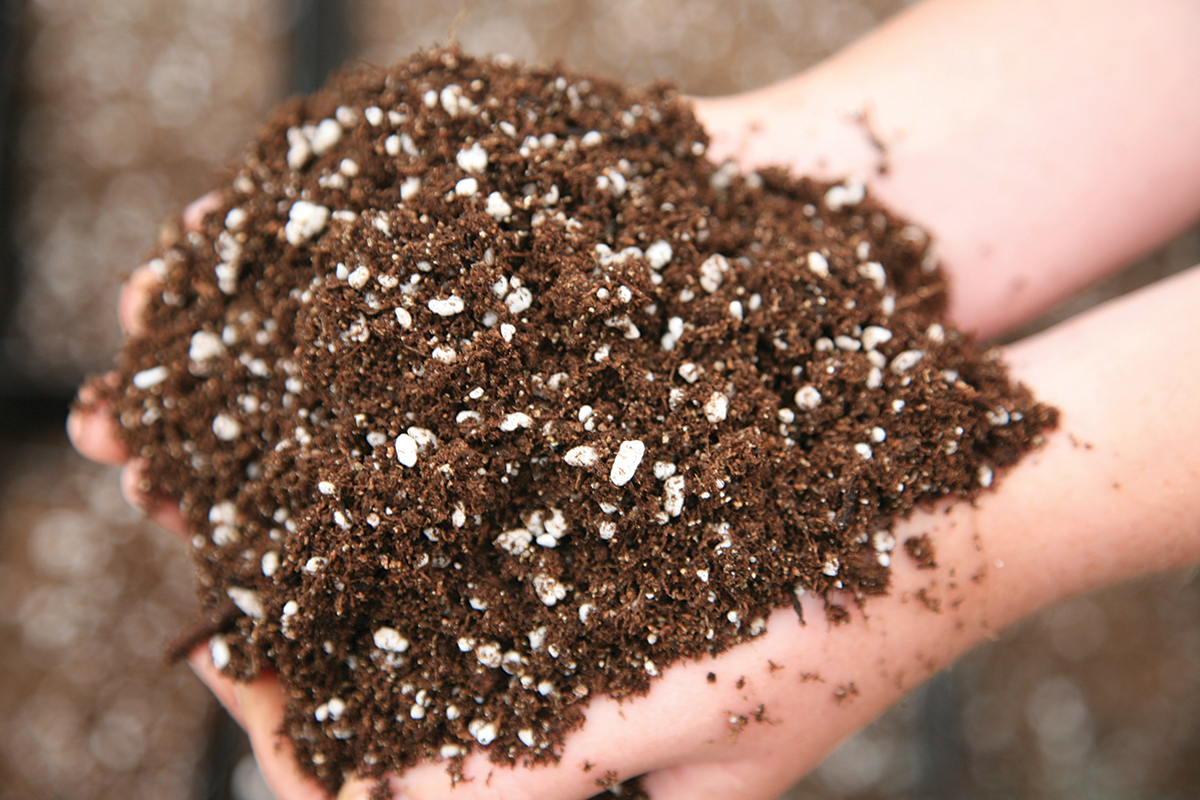
For Annuals, Vegetables, Small Fruits, and Herbs
Plants are expected to be used for one full year need a good quality peat-based or coconut fiber-based potting soil. These are available at local garden centers.
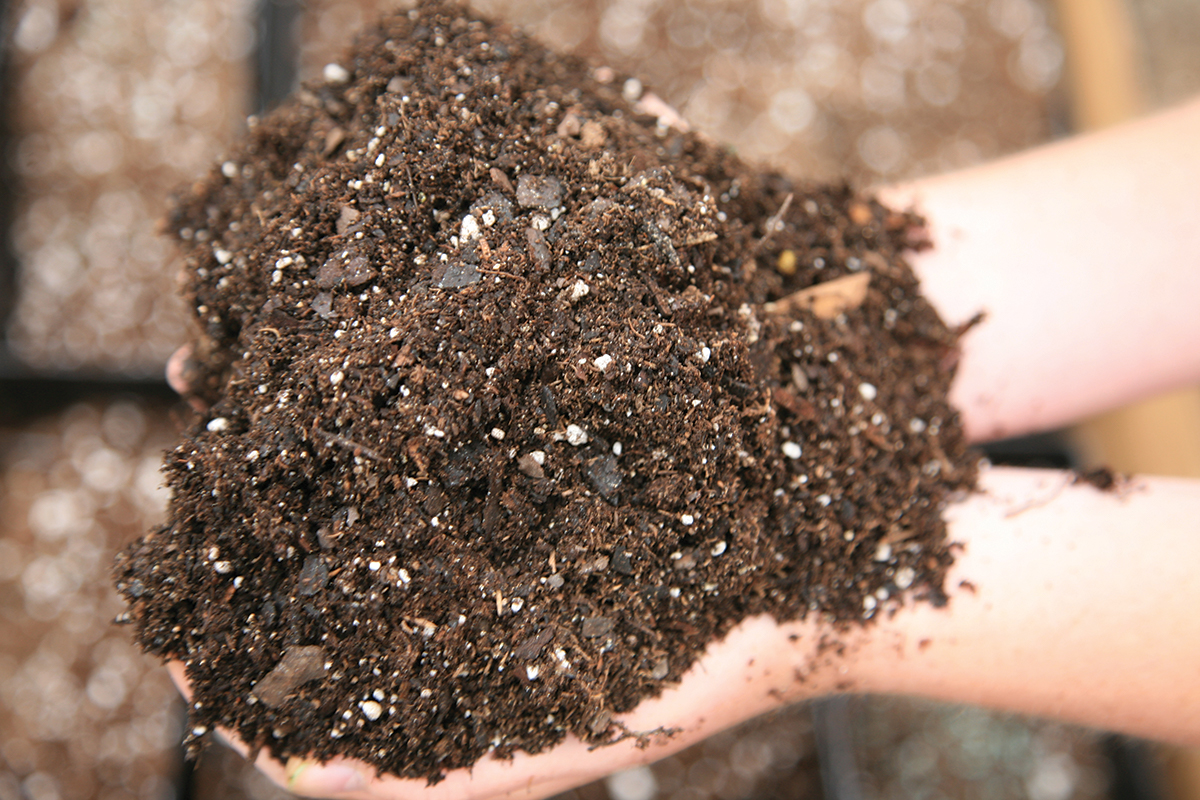
For Perennials, Vines and Tropicals
Plants that are expected to last for 3 to 5 years before dividing, use a good quality potting soil, with perlite or pumice and/or composted pine bark. Such potting soils will tend to decompose less.
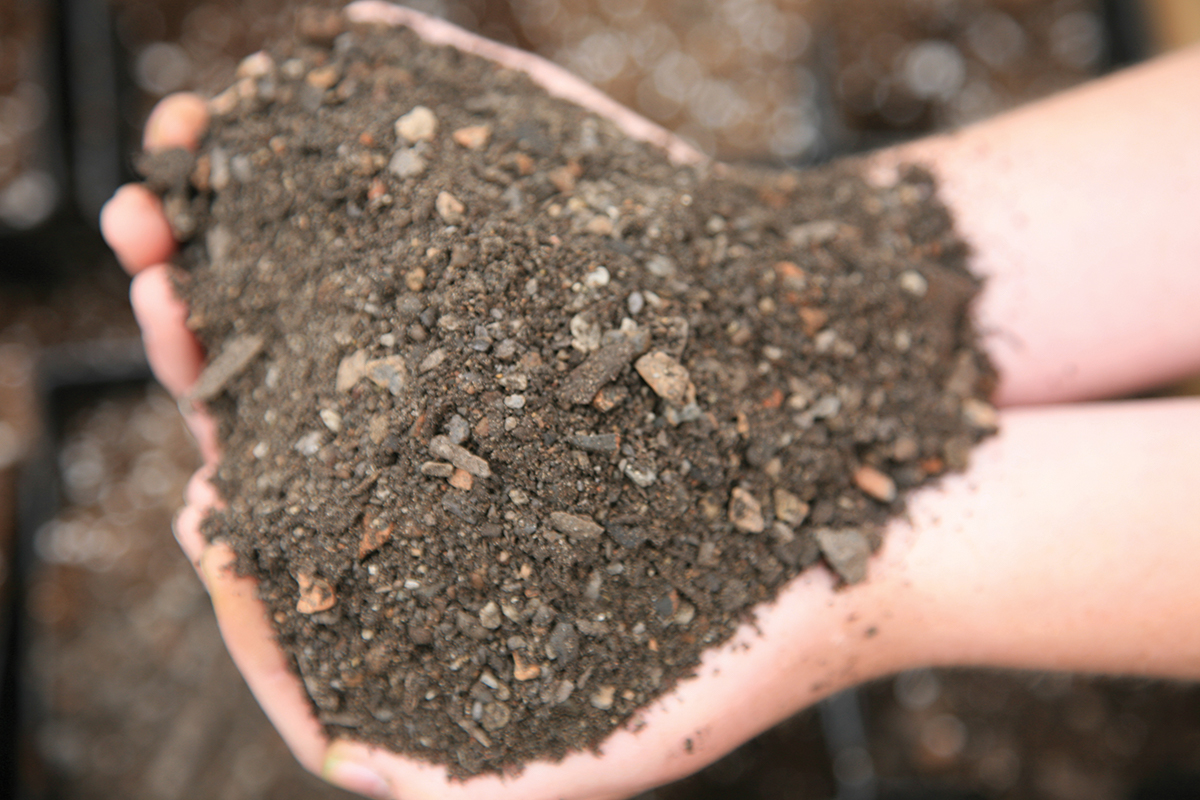
For Succulent Plants
Plants that can last decades without repotting, succulents need a good quality mix, typical of one marketed for rock gardening. The unique quality of such mixes is that they have a high mineral content (e.g. perlite, pumice, or expanded shale) and less organic matter, and therefore do not decompose over time.
LiveWall Standard size planters are available in two widths. The soil volume of each planter is:
half – 0.109 cubic feet.
full – 0.217 cubic feet.
LiveWall Large size planters are supplied in a single width. The soil volume of each planter insert is 0.4 cubic feet.
Please Note:
Depending on the soil type and starter plant size, additional soil may need to be ordered to account for settling.

